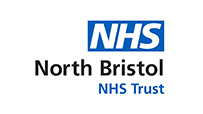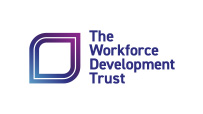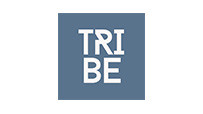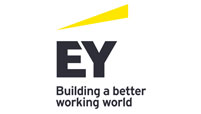
Bristol
Financial Resilience
Action Group
In response to the cost-of-living crises Hargreaves Lansdown wanted to use its expertise and influence to support those most affected.
As a first step we developed our 5 to Thrive campaign, focusing on the 5 building blocks of financial resilience: control your debt, protect your family, save a penny for a rainy day, plan for later life and invest to make more of your money.
In partnership with Oxford Economics, Hargreaves Lansdown developed the Savings and Resilience Barometer which uses 16 indicators within these five pillars of financial behaviour to report on the financial resilience of the UK.
The reports, released every 6 months, are aimed at advising policy makers into the impact of their decisions.
Hargreaves Lansdown wanted to apply these findings, and the expertise we hold internally, to generate greater financial resilience in Bristol where Hargreaves Lansdown is based and prides itself on being.
So the concept of Bristol Financial Resilience Action Group (BFRAG) was born.
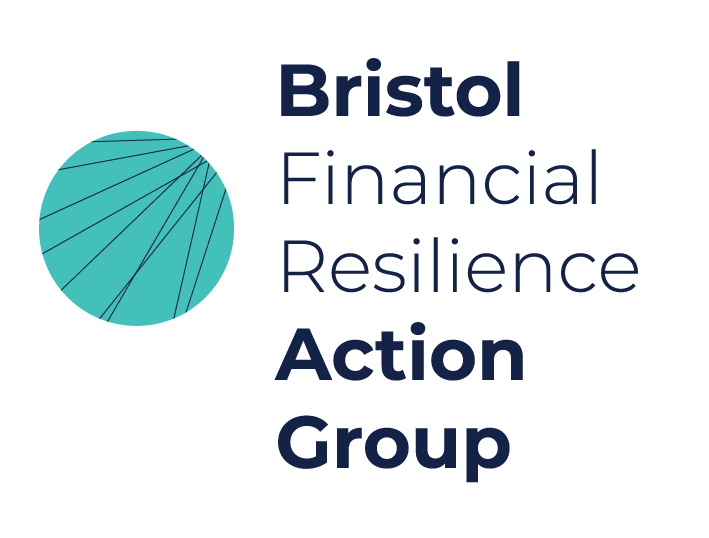
Programme overview
Bristol Financial Resilience Action Group is a network of employers aimed at boosting the financial resilience of Bristol. This is achieved through signatories fulfilling 3 key commitments:
-
- Distribution to their employees of a free guide to financial education, provided by Hargreaves Lansdown, across the 5 pillars of 5 to Thrive which gives foundational knowledge and links to where to find further information
- If a signatory already has financial education resources, it is not a requirement to distribute the flyer provided by Hargreaves Lansdown
-
A commitment to work towards internal changes within the organisation to boost financial resilience of employees. We recognise that some of these may take longer to achieve, especially in the current environment. We will work with employers within the action group on reaching these goals:
- Sorting payroll errors within one week
- Signposting to debt advice
- Offering paid for life cover by default for all staff upon employment
- Sick pay in excess of statutory sick pay
- Incentivizing pension contributions of at least 12% of pay
- Anytime pension contribution changes
-
Encourage employees to sign up to a course of 12 monthly virtual webinars hosted by Hargreaves Lansdown across the 5 pillars of 5 to Thrive.
The programme was launched in 2023, with 19 signatories taking part in the pilot year, please see our End of Pilot report. Now with 32 signatories, we launched year 2 of the programme in January 2025. A course of 12 financial wellbeing webinars covering key financial topics delivered by experts from Hargreaves Lansdown.
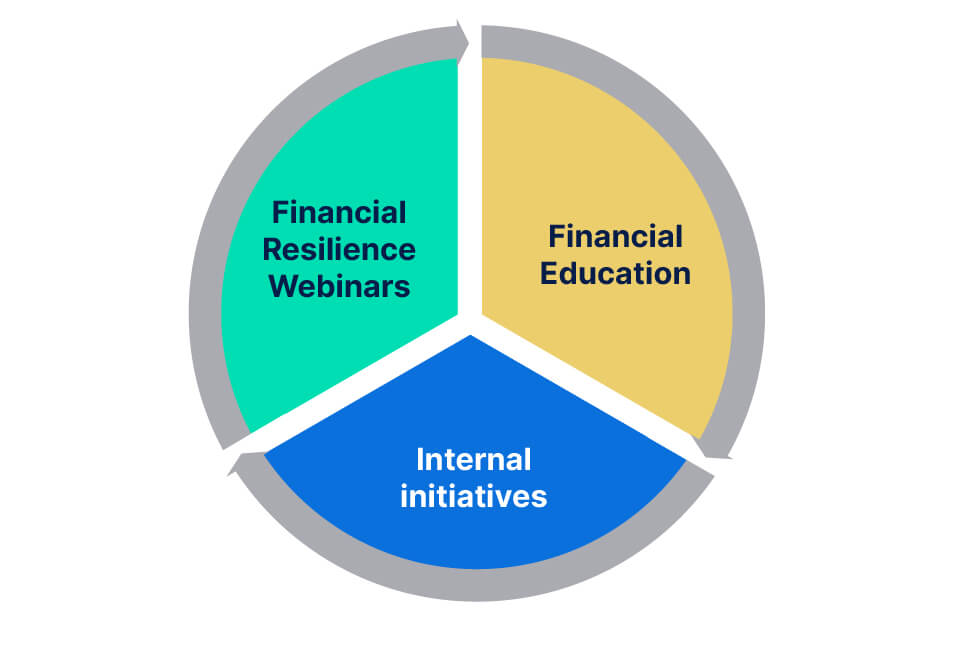
Mission statement
As the latest Savings and Resilience Barometer report shows, there is room for improvement for Bristol in relation to financial resilience. Hargreaves Lansdown is proud to be a Bristol firm and want to make a positive impact for the community where we are based.
Objective 1
To utilise Hargreaves Lansdown’s knowledge and expertise to make a positive and proactive impact in relation to the cost-of-living crisis
Objective 2
To provide employers with the tools they need to help their employees with their financial struggles
Objective 3
To make Bristol the most financially resilient city in the UK
Benefits of the programme
Employer
- Cost-free employee support
- Increased financial resilience of employees
- Showcase having a positive impact in your local community
- Part of a wider business community in Bristol that is proactive in its response to the cost-of-living crisis and builds strong financial resilience for the future beyond the current situation
Employee
- Access to financial education in a simple and readable format
- Increased financial resilience
- Work for an employer who cares about their impact in the local area
Clare Stinton: Thank you for joining the first of our 12 Financial Wellbeing webinars running over the course of 2025. This session, ‘New Year – New Financial You,’ will combine need-to-know details about the next 12 months, with resetting for the year ahead – and January is the perfect time to swap holiday indulgences for healthier habits, including financial ones.
Many of us will be thinking about financial resolutions right now, and this course is here to help you stick to them. Your employers – as members of the Bristol Financial Resilience Action Group – have made this opportunity possible. A 12-month programme packed with practical tips and money hacks to support your financial wellbeing.
I’m Clare Stinton – Head of Workplace Saving Analysis at Hargreaves Lansdown. I steer our financial wellbeing strategy. My role is all about helping people make their money work as hard as they do. With a background in Financial Education, I have seen, first-hand, how the right knowledge can help make life easier by giving people the confidence to manage their finance as well. The Bristol Financial Resilience Action Group is now in its second year – so, welcome back, those of you who joined us for the pilot, and welcome to our new audience. I think it’s worth sharing why we’re providing these webinars – and, essentially, HL believe we have a duty to share our expertise with our Bristol community to make a meaningful impact.
Understanding your finances is the first step to taking control, and this programme is designed to equip you with the skills and confidence to manage your money effectively today and sustain your financial wellbeing well into the future. Before I get started, just a bit of housekeeping – this session will last for around 20 minutes. Any questions – given that this is a recording, please do raise those by getting in touch with us directly, and please remember that everything discussed is purely information and not to be considered financial advice – but I do hope that what I talk through will enable you to go away and make decisions from a more informed position.
Here’s a quick rundown of today’s agenda. As this is the launch, this session will be a little different from future ones – we’ll start with an introduction to HL, the Bristol Resilience Action Group Programme, and the ‘5 to Trive’ framework that underpins this course – as well as tips on making the most of what will be on offer over the next 12 months.
In the second half, we’ll focus on how to kickstart your finances for 2025 – or, as I’ve seen it trending online, ‘2020-thrive.’ After this session, take a moment to reflect on your goals for the year, whether it’s tackling any debt, saving for a holiday, or starting to invest. Clear goals can guide your financial decisions every day – and then we’ll finish up with some expert tips from my HL colleagues – insights that we wish we’d known sooner to help inspire your own financial goals and set you on the path for a stronger financial future.
So, for anyone who might not be familiar with Hargreaves Lansdown (HL) – we are a Bristol-based company with strong local roots. The business started 45 years ago in a Clifton bedroom, founded by Peter Hargreaves and Stephen Lansdown – hence the name! – and then, fast-forward to today, and HL is one of Bristol’s largest employers with over 2,000 team members.
We’ve grown to become the UK’s largest retail investment platform, trusted by more than 1.9 million clients and managing over £155bn-worth of assets. Our mission is simple – we want to help people save and invest with confidence – and, in recent years, we’ve doubled down on creating resources, tools, and education to support people in achieving better financial outcomes.
Let’s start by looking at the nation’s financial resilience and how people feel about money in general. Over the past few years, it’s become clear just how closely financial worries and our overall wellbeing are linked.
Recent data shows that 7½ out of 10 people feel somewhat or very worried about rising costs. It’s about 77% of adults and, interestingly, that number is slightly higher for women, at around 81% compared to 73% of men.
For many of you, financial education may not have been part of your school experience – it certainly wasn’t for me. Even with financial education added to the national curriculum in 2014, access to it still varies dependent on where you lived.
A lot of people I speak to feel like they’ve been left to figure out money on their own, and that’s no surprise. Money is still a taboo topic here in the UK, and being an adult doesn’t mean you automatically have it all figured out. So, if this resonates with you, know you’re not alone – as a nation, we’re still playing catch-up when it comes to financial literacy compared to some of our international peers.
Knowledge is power – it is the key to us managing our money well. Those of us who can’t or perhaps won’t pay for financial advice do need access to tools and expertise in order to make our money work as hard as we do.
So, let me share how HL views financial resilience – it’s all about ‘5 to Thrive.’ So, this blueprint for resilience was developed by speaking with our financial advisors about how they prioritise and work with clients. From there, we’ve created a practical framework and supporting resources that could guide you.
Now, this isn’t just a HL creation – it’s actually been through rigorous peer review and the founding board. That includes experts from Legal & General, the Money and Pensions Service, Department for Work and Pensions among others – so you don’t just have to take our word for it.
The framework has five key pillars – ‘Control your debt,’ ‘Protect yourself and your family,’ ‘Save a penny for a rainy day,’ ‘Plan for later life,’ and ‘Invest to grow your money.’ You don’t have to work through these in a strict order, but pillar 5 – ‘Investing’ – typically is towards the end of that ‘cause you make sure that you’ve built your financial wall of defence first – so think of it as laying the solid foundations. You’re building a house... you wouldn’t start with the walls – you need strong flooring to ensure that everything stays stable. So, perhaps without an emergency fund, for example, you could find yourself in a bit of difficulty if you didn’t have emergency cash to tap into if life threw you an unexpected curveball.
If you invest money that you might need for that unexpected expense, then you might be forced to rely on credit or withdraw your investment at the wrong time, potentially at a loss. That can leave you worse off than when you started, so it can be a case of one step forward, two steps back. But we’ll unpack that in more detail as we move forward.
We didn’t stop there – so, as well as create a framework for information delivery, we’ve gone one step further and built out a way to measure nationwide household financial resilience. The HL Savings & Resilience Barometer is essentially a huge, robust data tool that enables us to see how the nation’s finances are faring based on those five pillars that we just looked at. But, behind the scenes, there’s a huge amount of science that goes into it. Put simply, the methodology enables us to score household financial resilience out of 100. The higher the score, the better the household financial resilience.
It turns out that nationwide financial resilience has actually gotten better since before the pandemic in 2019. Pre-pandemic, the average household score was about 57.2 out of 100. The improvements that we saw during the pandemic – so people being able to squirrel money away due to less ability to spend on things like eating out, socialising, or holidays... they helped offset some of the issues which were caused by the cost-of-living crisis – so left us with a score in 2024 of 61.1 out of 100. It’s actually 3.9 points higher than it was back before the pandemic.
A significant part of that increase comes from people being able to save more during the pandemic – because of those lockdowns, it was tough to spend money and go out – but, behind that good news, there’s a concerning trend, and that’s that there is a gap in the financial resilience between low and high-income households – and that is growing.
The pandemic and cost-of-living crisis did not affect everyone equally. Essential items, such as food and energy, rose higher in cost than non-essential items – and that meant, for low-income households, with little wriggle room in their budget... they faced tough choices – and trends also show that borrowing within this period also increased, with some households borrowing money to fund the essentials, put the heating on, and put food on the table.
People are having to make savvy decisions with their money today. The reality is that life has got more expensive – and, at the same time, many are feeling the weight of a heavier tax burden. We’re all feeling the squeeze, but the effects vary for each person and household – so very much like what we saw during the pandemic, and figuring out how to manage your money wisely has never been more important.
I won’t dwell on this slide too much, but I want to highlight the role employers play in supporting financial resilience. Your employers have shown their commitment to your wellbeing by joining the Bristol Financial Resilience Action Group Initiative (BFRAG), by putting you – their people – at the heart of the programme.
Research shows that the type and size of your employer can have a big impact on financial resilience. For instance, around 44% of households – where the main earner works for a large private sector company – report having great financial resilience – compared to just 28% of those in small to medium-sized enterprises.
The self-employed predictably face greater challenges, with only 14% having strong financial resilience – and one in two of those households, where the main earner is self-employed, falling into ‘Poor’ or ‘Very poor’ categories from our Barometer data.
So, do check about the benefits that your employer offers. From life assurance to pension contributions, to gym discounts, or local perks... what’s on offer can really help plug gaps in your financial safety net without you having to dip into your own pocket. At a time when life has got more expensive, that’s incredibly valuable. One simple step you could take is to explore what is available and ensure you’re making the most of what’s on offer.
So, now that I’ve set the scene with the background to the Bristol Financial Resilience Action Group – and the bigger picture of how the nation’s finances are faring – we’re gonna shift gears and talk about how the financial education programme will work.
The 12 modules in this course are built around the ‘5 to Thrive’ framework which I introduced earlier. It’s a holistic approach, designed to strengthen financial resilience no matter your age, background, occupation, or current level of financial knowledge.
What’s great about this framework is its versatility. It is something you can return to at any stage of your life for guidance and direction – and one of the most important messages is that financial security isn’t just about one aspect of your finances. It is a puzzle – there are multiple pieces and they need to fit together to give you that financial wall of defence.
By looking at your finances as a whole, you can identify and address any potential vulnerabilities that could threaten your financial resilience. So, this framework really encourages a well-rounded approach, so that no part of your financial wellbeing is overlooked.
As an example – through our research – some individuals may be paying a healthy amount into their pension, but actually have no money tucked away for a rainy day – and that can leave them vulnerable to an unexpected expense.
Broadly, we can split the five pillars into two sections: ‘Protect you and your family’ and ‘Save a penny for a rainy day.’ Pillars 2 and 3 are ways to reduce risk – that is both everyday risk as well as the tragic, disastrous type of risk that we all hope to avoid. The remaining three pillars – ‘Control your debts,’ ‘Plan for later life,’ and ‘Invest to make more of your money’... they are all about building a better financial future – unlocking new opportunities.
Striking a balance between immediate financial needs and your long-term financial needs is vital for your financial stability over the course of your lifetime. People need to have a safety net for the present and a strategy for the future. So, put simply, it is risk management that will give you peace of mind. And central to achieving that financial resilience is people understanding their optimal asset and vehicle for their goal and time horizon – and that’s all about knowing when is the right time to opt for cash and when investments will best serve your objective and your timeline in terms of your savings goal. We’ll explore that in a lot more detail over the course.
For example, a 20-year-old going to university may prioritise building an emergency cash safety net when it comes to reducing risk, but they may feel more comfortable erring on the ‘Less is more.’ So, when it comes to putting money aside for an emergency cash safety net, we usually say 3-6 months’ worth of essential expenditure... they might feel comfortable erring more on the three-month side of things – or perhaps less – because they know that their parents can support them financially, if needed, if they were to get into any financial difficulty.
However, a 50-year-old breadwinner with two children will need to ensure that their family is cared for, should the worst happen – or should their income fluctuate – and they might look for financial insurance as a priority as well as building that emergency money. And, being the breadwinner, they might look to put more money aside to err on the six-month side of things to ensure that they are covered for any unexpected events.
Priorities will flex and change as you age – and as life events and milestones occur – so it is important to constantly review these aspects.
Here’s some practical info – so each webinar will take place on the second Thursday of the month at midday. The presentation will last between 20-30 minutes, depending on the topic – some are more in-depth than others. I won’t always be hosting – we’ll mix things up with different speakers. Next month, my colleague, Jack – one of our Financial Wellbeing Specialists – will lead the session on ‘Taking control of debt.’
These webinars are optional – and, whilst not every session might apply to you, just picking up a few pieces of useful info can make a big difference. So, for instance, you might think that retirement isn’t relevant at 30, but what you may learn could come in handy later on in life, or it could help someone in your life at the moment. If you are 30 and attend that session, you’ll also learn that the earlier you start planning, and prioritising, and engaging with your retirement plan, the better – because of the power of compound growth over the long-term – and getting that money in earlier means it has a much longer timescale to grow.
Now, knowledge is power – it is also the antidote to uncertainty. The more you learn, the better you can handle life’s financial challenges – like buying a home or dealing with unexpected costs. It is all about breaking down big goals into smaller, bite-sized, manageable steps.
To get the most out of the course, stay curious, make time for each session – the webinars are only 45 minutes, so you can easily fit those into any lunch hours – or you can catch up on demand – all of them will be recorded.
Feel free to ask questions, and share what you learn with your network, and start those important conversations about money with your friends and family.
Every webinar will be recorded and made available on the financial resilience hub for you to watch at your convenience. The web address is displayed on-screen, and you can also scan the QR code with your phone to access the hub. Typically, the webinars will be available on demand within 7-10 days after the live session – and that’s because our compliance team need to review and approve the video, and we also need to create a transcript.
Once available, you’ll have access to the session and can explore more educational resources and valuable insights – all available via the Hargreaves Lansdown website.
Our final segment for today – to get you thinking about financial goals ahead of the first module in February. So, 6 in 10 people will make a financial resolution for the New Year. Women are more likely to make financial resolutions than men – so 64% versus 55%. Spending less, getting on top of finances, shopping around, paying down debts, paying into a pension, and making a will appear on the list of popular resolutions, but saving is top of the list. Less than 10% of people that make a resolution will stick to it for 12 months or more.
It’s important to recognise that money is a tool, it’s not the goal – it is the tool to help you achieve your goals. Money is often seen as the end goal – that people are focusing on a figure – but, in reality, it’s gonna help you achieve the things which really matter in life. So, whether it’s building security, supporting your family, or living a life that aligns with your values. Money should be viewed as a means to an end – not the end, itself.
By understanding how to manage and use money effectively, you will gain the freedom to make decisions that improve your overall wellbeing and create a future that reflects your personal goals. For example, Sarah – a single parent – initially worked just to pay the bills and put food on the table. She wanted to earn more money and she was thinking of ways to boost her income, but that wasn’t because she wanted to see more zeros in her bank account. Her motive was providing more for her children – so money is the tool that enables her to send her children to a good school, create a safe home, make memories on family vacations. So, Sarah controlling her money wasn’t necessarily about accumulating wealth, but it was about using money to build the life that she wanted for her family.
Next-up is ‘Your money mindset.’ This is a unique set of beliefs and attitudes that you have towards money that impact the way you manage your money – so it’s a lens through which you make financial decisions. It recognises that we make our financial decisions often from a place of emotion rather than logic. So, you could have practical solutions, but, if you don’t understand your emotional triggers with money, then your financial habits are unlikely to change. So, it’s this consciousness and awareness of your behaviours that will enable you to implement better habits.
As an example, if you are likely to impulse-spend during an evening – and you’re scrolling and Internet-shopping online – then enforce a time-delay. Ask yourself if you still want whatever is in your basket within 24 or 48 hours’ time, and the chances are that you won’t go through with the purchase.
There is something in your brain called the reticular activating system – and it’s essentially a filtering system for your brain – so, when you tell it something, it will go out and look for it – reinforce it. So, that’s why, when you say, ‘I’d like a new car – a yellow Mini,’ you see them everywhere because you’ve primed your brain to look for what you’re saying – and it works in the same way when you tell yourself something... it will go out and look for it, and try and evidence and reinforce what you’re saying. So, if you tell yourself that you are bad at saving, your brain will look for ways to prove that – and it becomes a self-fulfilling prophecy. It’s really important that you understand your emotional links to money and your behaviours, but also that you reframe your mindset for success – so you tell yourself that you’re a saver, and you hold yourself accountable.
In Summary, take time to focus on your financial wellbeing – be honest with yourself about your priorities, set achievable goals that you can track. Establish good financial habits by setting aside time each month to review your plans and check progress – a monthly money date. If something isn’t working, don’t hesitate to adjust – it’s better to tweak your approach than to let it slip completely – it’s a learning curve and it has to work for you.
We’re more responsible than ever for our financial futures, so consider listening to a financial podcast, attending these webinars, reading books to expand your knowledge – just ensure that you’re using a trusted expert source.
Time to share some of the tips that the HL team wish that they had known sooner. One strategy that I find effective is keeping my savings in a separate account to my current account – that way, I’m far less likely to dip into them by mistake. I’ll set up a direct debit on payday to automatically move the money over into my savings account, and that way it’s out of sight, out of mind. Also, by moving it on payday means that I am paying myself first and I’ve built that saving into my budget. If I waited ‘til the end of the month – and saved what was left over – then there would be far less. So, do build saving into your budget and move that out on payday to build that consistent, healthy habit.
Rohan wishes he’d discovered the power of compounding earlier, so we’ll dive deeper into this in the Investment modules, but it’s often called ‘The Eighth Wonder of the Word,’ by Einstein. Essentially, it’s the ability to earn return on your past returns as well as your initial sum invested – and that means the longer that you invest, the more powerful the effect and the potential growth.
Nick – an Investment Specialist – wishes he’d engaged with investing earlier in life. If your savings are in good shape, consider investing your money – particularly if you’re leaving that money or your savings goal and objective is five years or more... investing will give you the chance to out-pace inflation and grow your wealth – and the longer you invest, the better the potential return. So, Nick’s also referring to that compound growth that we mentioned with Rohan.
Katie recommends starting an emergency fund as soon as possible – it’s that cash safety net for life’s surprises. So, a good target is 3-6 months worth of essential expenses – this is very much the ‘Needs,’ not the ‘Wants.’ Starting small is better than not starting – so, even if you’re able to just put £20 or £50 a month away, then that’s a great start, and it could prevent you from relying on credit cards when you’re in a pinch.
Next tip is from James. He really values actually creating a budget – so taking the time to write everything down in black and white, understand what you’ve got coming in and what’s going out – and, ‘Where are you spending that money?’ So, this is really around mindful spending – making sure that you’re spending on those things that you prioritise, rather than wondering where your money has gone. And, by doing that, you can often identify areas of waste – and then that ‘Where you can claw back some money’ can go towards your financial goals.
And then, lastly, a tip from Matt. Matt’s tip is something called ‘The Lifetime ISA.’ So, from age 18, you can open a Lifetime ISA – that’s an account that’s designed to help people buy their first property or it becomes a pension hybrid. So, with that account, you can put in up to £4,000 per year and the Government will give you a 25% bonus – so up to £1,000 available in bonus every year.
Be aware, that £4,000 does eat into your wider £20,000 ISA allowance – and, once the money is in that account... if you don’t use it for a first-house purchase, it’s after age 60 that the withdrawals are tax-free. If you take the money out for any other reason other than a first-house purchase – or before age 60 – then there is a 25% penalty, and that means you could get back less than you invest. So, worth doing a bit of research on the Lifetime ISA, and you can find that information on our website.
So, to stay on track with your financial goals throughout this course, here’s five tips:
1) Be specific – instead of vague goals like, ‘Be better with money,’ clarify what that means for you. As an example, rather than save more, you’d have saved £200 a month for an emergency fund – or attend 50% of live webinars this year. That way you know exactly what you’re working towards and you can hold yourself accountable.
2) Keep it simple – don’t overwhelm yourself with complicated plans. Focus on a few achievable goals that really matter and then build from there.
3) Be realistic – set goals that are challenging but doable. Don’t set yourself up for failure by making them too ambitious because it’s really demoralising.
4) Deal with the root problem – if you’re constantly struggling with debt, work on the underlying issue instead of just the symptom. So, think about that money-mindset and think about the emotional triggers for the spend.
5) Automate where you can. Life gets busy, so make things easier by automating tasks like savings or bill payments. Automation will help you stay consistent – and consistency is really key to achieving financial goals.
I’m going to leave you with this final thought – which is, if you imagine that you are in a relationship with money, what would happen if you ignore it? Just like any important relationship, neglecting it would lead to challenges – difficulties – but, if you take the time to nurture it, understand it, learn about it, and put effort into managing it well, it will start working for you, and support your goals, and you’ll be able to build a better financial future.
That brings this session to a close. Please take a couple of minutes to read through the important investment notes on-screen. They reiterate that everything discussed today was purely information and not to be considered financial advice.
New year, new financial you
Kickstart the new year with the BFRAG course launch. In this session we walk you through the course format, how to sign up for webinars, and where to access recordings. We discuss the importance of having a good money mindset, this is the unique overriding attitude you have to your finances that can influence your daily financial decisions. Plus, get introduced to our "5 to Thrive" framework and learn how to build strong financial habits for the year ahead.
Jack Stevenson: Hi, everyone – thank you for coming today to this ‘Take Control of Your Debts’ webinar. My name is Jack, and I’m Financial Wellbeing Specialist here at Hargreaves Lansdown. In terms of what my role is – and the role that I share with my colleagues – is to host webinars such as this, to help develop your financial education in a range of different areas.
In terms of today’s presentation, it’s really important to highlight anything in it is for information purposes only – isn’t to be seen as personal financial advice. If financial advice is something that you do need, this is something that we can offer here at Hargreaves Lansdown at an additional fee. Please feel free to get in touch with us if that’s what you’re looking at doing.
In terms of this presentation, tends to be between 25 to 30 minutes, and there will be a time for some questions at the end of this presentation as well.
To start off with – in terms of having a look at agenda – in terms of what I feel we could get best use out of today. To start off with, we’ll have a look at the national picture – in terms of what is becoming a real issue – then look at good debt versus bad debt – and then move onto some debt management strategies in terms of how we can try help with our debts. Then, we’ll move onto looking at our credit scores – what they mean and what we could do to try and make those that bit better. And, finally, we’ll look at some sources of further information that we can use to support ourselves and our wider financial wellbeing.
To start off with, let’s have a quick look at the national picture.
When we look at our lives – when it comes to money – over the past few years, a perfect storm has been brewing. It’s easy for us all to see that our lives are getting more expensive. Not only to add to that, due to the rise of cost of living and the COVID-19 pandemic, this has caused household incomes to fall in real terms since 2020. This has certainly helped in resulting in our lives becoming more expensive.
When we take into account the rising cost of living, we look at things such as our weekly shop has become more expensive. Things such as heating our homes on those cold, wintry nights has become more expensive too – so there’s been a lead to more debt management issues becoming a bit of a problem in the UK.
As statistics certainly back up those points as well – those here – that 1,227 debt issues are dealt with on a daily basis by Citizens Advice.
So, let’s continue to look at that nationwide picture.
What we’ve seen are periods of forced saving for many during the pandemic – and during lockdowns – and UK personal debt bubble shrank for the first time since 2013. But then, the cost-of-living crisis began and life got more expensive – therefore, we’ve witnessed a U-turn on that.
The debt held by UK consumers has steadily increased in the last few years. As you can see, between September 2023 to September 2024, there’s been an increase in the amount borrowed within the UK.
What we’re seeing is increased credit and debt being fuelled by the cost-of-living crisis – so people are borrowing to fund their daily essentials. Now, for the lower-income households, those essentials do make up a large percentage of their take-home pay.
Debt was a cause for concern for some, pre-cost of living – but, in this tough economic climate, money anxieties are growing as people feel the pinch on their purse. Research by the ONS found that 9 in 10 adults report their cost of living has increased.
The most common reasons reported for increased costs were price of food dropping and energy bills going up. Our money simply isn’t going as far – it just isn’t buying us as much as it used to, previously. As a result, shoppers are changing their behaviour.
For example, I’ve noticed over the last few years – when doing my weekly shop – more families are going up and down the aisles with their phone calculators out – some even telling the assistant at the checkout to stop at a certain monetary amount ‘cause that’s the specific budget they’ve set out for that weekly shop.
To put this in a bit more context, this next slide perfectly sums up in terms of that rise of cost of living. What we can see here is three different years between 1993, 2008, and 2023. As we can see here, in 2023, there’s been a steep increase in terms of the cost of a mortgage, almost making up 50% of the average household expenditure.
When we look at other things, such as the increase of energy going up as well – make up a large percentage of the household income going on those two fundamental aspects.
As you can see, since the last few years, the price of food has slightly decreased, but it still makes up quite a large percentage of that – leaving us with potentially a little bit of money left over to look at those long-term savings to put away for those rainy day funds – so to cover for those potential emergencies that might happen later down the line.
In terms of debt though, it can affect all ages and can be a real cause of anxiety if it’s not under control – particularly in this current climate. Because of higher interest rates, debt could be becoming more costly. The reason we’re seeing increased interest rates since 2021 is because raising rates is a key tool to the Bank of England that they have at their disposal to try dampen inflation.
By increasing interest rates, people are encouraged to save and spend less. This can lead to less demand for goods – which, in turn, can encourage lower prices. For example, rates were only cut twice during 2024.
People are using more credit at a time when borrowing is becoming more costly. Borrowing was a lot cheaper, if you look back to 2021 and early 2022. The Bank of England hiked the base rate interest rate 14 consecutive times in the last few years – the fastest pace for 27 years. Gone are the days of the 0.1% – it hovered at levels of 5% from May 2023 last year. This is the highest rate since the financial crisis in 2008. Although it has dropped to 4.5% – start of this year – it’s slowly starting to come below that 5%.
How the effects felt will differ depending on whether you’re a saver or a spender. Average interest rates on credit cards are at record high – the average APR being around 36%.
Higher interest rates generally make saving more attractive, so it’s good news for our cash savers – they’ll be getting a better interest rate passed on from the banks. Unfortunately, banks often take longer to pass on the increase. If you have savings what rates of interest you’re receiving – is it anywhere close to that 4% or 5%?
You often need to look further than the high street banks to make sure you’re getting the best possible rate, ensuring your money is working as hard as possible.
In terms of increase to the base rate, how could it potentially affect our debt?
Firstly, when we look at credit cards, balances on those credit cards tend to become a bit more costly. A really good way in terms of what we can do to analyse this as well... by looking at our mortgages.
Now, I’m sure there’ll be people here today who have that mortgage – and, potentially, if you’ve remortgaged as well – or you’re a first-time buyer – you might have seen those sharp increases from those previous rates that they used to be in around January 2022. What we can see here – between 2022, 2025 – borrowing the same amount of money over a same period of time... those costs have certainly gone up by almost £500 more.
It’s not only the people with mortgages who this would be affecting. If you’re out renting a property, you might have seen an effect to yourself with this as well – by your landlord increasing those rental payments that you pay. This may be because they’ve still got that mortgage to pay off on those rental properties – they might have remortgaged as well – having to be at the higher rate – which means the mortgage repayments they will be having have also increased – therefore, they might have to increase those rental payments to cover those increases within that mortgage payment.
Now, moving on from that nationwide picture, what we’re gonna be doing now is how we can take control of our debt – tips and tricks in terms of what we can be doing to aid that.
So, what is the cost of borrowing? Simple terms is interest rates on the cost of borrowing. There’s also what’s known as APR – which is the Additional Percentage Rate that takes into account interest and any additional charges be added on top of the money that you borrow.
In terms of debts, this can come in all different shapes and sizes in costs – so we’re going to be taking a look at a few of those now.
First of those is mortgages. Mortgage rates are currently between 4%-6%. It’s quite often that people think, because it’s the largest sum of money borrowed, it’ll be more expensive to borrow that money, but this isn’t always necessarily the case.
When we look at an overdraft, overdraft let you borrow money through your current account. So, you go into your overdraft, any purchases you make take you below the £0 in your bank account, but you’ll likely be charged for this – and this can be between 35%-40%, which could be considered quite an expensive rate.
As well as that, we also have the ability to get credit cards. Credit cards average around about 35.95% APR, but sometimes these can be much higher. When taking out a loan or credit, you’ll see the APR – this is the Annual Percentage Rate. Let’s say that the APR is 35% - the interest you’re charged over 12 months is equal to roughly 35% of your balance. The cost of borrowing – for example, if you were to borrow £1,000, the interest rate on that would be £350 – so your total cost would be £1,350.
In terms of personal loans, the repayments on this can be a bit dependent in terms of how much you borrow and for the length of time you borrow – and in terms of what your credit score is as well.
Costs of personal loans could be around 4%-12% – as we mentioned, that is gonna be dependent in terms of the length and the amount you borrow.
There’s also payday loans. In terms of a payday loan – short-term loan designed to tide you over until you get paid. Although often easier to be accepted – with less stringent debts – your repayments are expensive, are often used as a last resort.
And, finally, there’s borrowing from family. In terms of this, it’s normally dependent in terms of how you speak to those people on the build-up to asking them, a few weeks before, if you could borrow some of that money and to help with any of those issues you’re having.
What we’re gonna be looking at here is how much money you’re gonna be paying back if you were to be borrowing £5,000 over a three and five-year period. What we can see here is that, even borrowing the same amount over that three and five-year period – at the same APR... the three-year period, the monthly repayments are gonna be higher than those if we were to repay it over a five-year period. However, what we can really start to see here is, over that longer period, we are gonna be paying back a substantial more amount than what we would have borrowed. Therefore, it would be a good idea to analyse this in the long run... although I may be having to forgo a bit more money for a few years, ultimately, over a long period of time, I’m gonna be paying back a lesser amount. It’s always important to familiarise yourself with those key differences there.
Now, in terms of ways that we can lend money... there’s certain areas of ‘Buy now and pay later’ instances. I’m sure you’ve all seen these companies on screen now that you’ll see on quite a few websites. For example, I noticed the other week – that, when I was buying a takeaway, you can even get these on delivery in Uber Eats. They are everywhere – in terms of those apps that we use to buy those things.
Companies like this – loaning money – typically don’t carry out the affordability assessments on you – and falling behind on these payments will likely mean late fees, which can have a negative effect in terms of your credit score and, therefore, your impact on future borrowing.
A few things to ask yourself before you are looking to buy these things – at each company – is, ‘Is this a real necessary purchase?’ – to have that purchase, for example. If you didn’t have the option of ‘Buy now, pay later,’ would you buy that item? Could you save up for it instead – so could you save up for it – savings account – to buy later down the line? And, finally, are you sure you’re able to meet those repayments with your other outgoings? Are you sure that you can meet those repayments without falling behind and incurring late fees that could potentially have a negative effect to your credit score?
As you might already be aware, debt isn’t necessarily a bad thing – it’s the spiralling that can have the biggest impact. Living within your means, not spending more than you earn. If not careful, little overspends can add up to big debts. This is where budgeting can help – which we do have some sessions through Hargreaves Lansdown on. It’s always worth keeping an eye out for those and doing that research to help you with that.
One thing that we want to distinguish here is the difference between long-term and short-term debts as well as saving. The Annual Percentage Rate – the cost we pay each year to borrow that money, including fees expressed as a percentage.
Long-term debt – such as mortgage loans – tend to have much lower APR than short-term loans. The APR is a broader measure of the cost of borrowing money simply reflect not only the interest rate, but also the fees that you have to pay to get the loan. The higher the APR, the more you have to pay back over the life term of that loan.
A secured loan is where you put up some kind of security – such as your home – when taking out a loan. The most important aspect – if you’re unable to repay – the lender can apply for a court order to sell your home to get back any money it’s owed. Typically, easier to get and allow you to borrow more – and over a longer period. However, if you get into financial difficulty, you may potentially lose that secured asset.
Compound investment growth makes your money grow faster each year. The compounding of debt... the value of your debt reduces over time as inflation rises.
Compare the interest rate on the loan to a realistic return on savings – whilst understanding affordability – can be key as well. We’ll, therefore, use this next example to give us a bit more of an idea in terms of what that could look like.
As already discussed, short-term debt is usually the most expensive. Prioritise the cost of this debt prior to savings, short-term debt is anything payable in less than a year – such as credit card debts or unsecured loans.
Scenarios will differ, but let’s take an individual paying £1,000 into the savings – perhaps putting some money away for those emergencies that might happen. If they achieve 3% interest in a year, then this will earn them £30 – bringing a grand total, £1030.
If they, instead, had used that £1,000 to pay off a loan that had 16% annual interest, they would have saved themselves £160 – therefore, you could see this a bit of a no-brainer.
Managing your debts is a no-brainer, but the place to start. Whilst staying on top of all your debts will avoid late payment fees, avoid compounding interest charges – check your credit score, which you may need if you continue to need credit.
The opportunity to potentially have an interest on savings – or to use the potential surplus income to pay off any existing debts or loans... best way is by looking at the cost of that debt and what that is.
We can see this in the example – the trade-off of earning 3% in a savings account versus paying off a loan with 16% interest being charged. For example, shorter-term debts, such as credit cards and overdrafts, could be extremely costly. Should absolutely prioritise paying off any expensive debt – these are usually in order of interest levels. For example, overdrafts – as we’ve already seen, banks can charge up to 40% for an overdraft facility. Credit cards – the average APR for a credit card is around 37%.
Now, what we can do here is look at some ways in terms of how we can reduce some of those debts that we might have. One of those might be consolidating all our personal loans that we have to cover all of our existing debts. Another way which we can do – if you are able, in some instances, to balance transfer credit cards.
This may often give you lower interest rates for those new introductory periods – potentially give you less money that you’re spending on those interest rates with those previous credit cards. There are useful resources on the Internet that allow you to compare and contrast those credit cards – it’s always worth having a look at those as well. And then, finally, avoiding those payday loans – those really high, expensive loans that potentially really damage your credit rating – as well as if you pay back those late.
I also mentioned, quite a bit today, that credit score. So, what is that credit score? As you’ve already seen, debt can have a ripple effect across your financial life – and that can really affect your credit score as well.
Your credit score is an assessment of how good you are at managing debt and it’s what lenders use to assess the risk of lending to you. Information held on your credit file and your credit application form might be used to decide whether to lend to you – how much they might let you borrow and how much interest they’ll charge you. It’s a way of lenders calculating the risk of lending money – and the higher score, the better chance of acceptance and more favourable interest rate, because they see you as less of a risk in terms of repaying that money.
For those of you who may not know your score, check it for free with one of these three agencies: Equifax, Experian, or TransUnion.
Every money contract that you enter also includes a critical search – but they also can include when you open a bank account with an overdraft facility. It is really important to highlight which loans do not affect your credit score.
Now, some of you are probably gonna be asking as well, ‘With that credit score, what can I be doing to try improve that?’ One of the ways in terms of what we can do to try and improve that credit score is register for the Electoral Roll – making sure we’re on that. Checking the mistakes – so making sure your full name’s on there and your date of birth’s correct.
Making sure we’re paying our bills on time – so making sure they’re all going out on time. Checking if you’re financially linked to another person, as their credit score can affect yours – it’s always worth looking at things such as that. And, finally, clearing any existing debt and cancelling any unused credit cards.
In terms of today, I thought it would be really useful to give you some key takeaway points for your next steps. So, firstly, reviewing your budget – are there areas where you could cut costs? We mentioned previously, living within your means and not spending more than what you take home each month. Are there ways to earn more money to pay down debt? So, for example, looking at savings accounts – prioritising those other debts. And then, finally, address debt, starting with the most expensive.
So, taking into account all the debts that you may have, doing the research into all the repayments that you have on those, and analysing which ones of those are the most expensive to you – and, therefore, prioritising those ones.
Do appreciate that debts can be quite a tricky subject and can be quite a problematic area. Luckily, there are some really useful resources out there that can help us with that. Firstly, there’s what’s known as ‘StepChange,’ who offer a wide range of debt solutions – help everyone no matter what they’re dealing with. They include things such as debt management plans, and they act as quickly as possible, and don’t ignore a potential problem.
Debt will need to be broken down into priority rank based on consequences if they’re all not met. This can mean unsecured personal loans are not focused on despite costs. Direct and concerned clients... the National Debt Charity and Association.
And then, there’s also what’s known as ‘MoneyHelper,’ which is another useful government website. Here, they have specialist help required as normal debt management may not be appropriate.
Resources are available to help people with problematic debt. This also includes things such as the Money Advice Service, Citizens Advice Bureau, and the Debt Advice Foundation. So, it always is really useful to go and look at these websites and find that help that you might need.
It is also useful to note that these won’t offer you any financial advice – it will be information and guidance, and if you do need that financial advice, it’s always worth seeking that as well.
I will just leave on the screen some important investment notes. This reiterates the points we mentioned earlier in this presentation – that everything is for information purposes only – and it isn’t being that personal financial advice.
Hopefully, everyone’s had enough time to read those now. I will go forward to some questions – also just leave on the screen the QR code to our next available session – so please follow that QR code to sign up to the next session next month, where we’ll be looking at how to be a smart spender.
Thank you, everyone, for listening today. If you have any questions after this presentation, please don’t hesitate to get in contact with us – we’re always happy to help. Thank you.
Take control of your debt
Debt isn't a bad thing, if you're controlling it and it's not controlling you. In this session we explore different types of debt, how it works, and the average interest attached to each product. As well as affordability, debt management strategies and how your credit score fits in. Buy now pay later schemes are taking the retail industry by storm, we’ll tell you why you should be wary of them.
Hi, and welcome to Session 3 – ‘How to be a Smart Spender.’ I’m Clare Stinton – Head of Workplace Saving Analysis at Hargreaves Lansdown. I am responsible for our financial wellbeing strategy.
My role is all about helping people make their money work as hard as they do. With a background in financial education, I’ve seen, first-hand, how the right knowledge can make life easier by giving people the confidence to manage their finances well.
Today, the session is purely information-only – and please don’t take anything discussed as financial advice. The slides will last for around 25 minutes – if you have any questions, please do get in touch with us directly, or raise those at next month’s session.
A quick look at what we’ll be covering in today’s session. So, first of all, understanding your pay packet and the tax brackets that we are subject to. Secondly, we’ll be exploring money management – including budgeting and some tips that you can go ahead and think about bringing in on a day-to-day basis when it comes to managing your money.
Next, we’ll look at the power of your money mindset and implementing good financial habits. And then, finally, I will share some ways to cut costs – it is all about making small tweaks and harnessing the power of the collective for a big impact.
So, first-up, ‘Understanding Your Pay.’ Research suggests that one in four of us struggle to understand payslips, so we’ll be looking at an example one in a couple of slides’ time. But, first-up, we’re going to look at tax rates.
So, really want to set the scene, here, around the tax thresholds that are currently in place. This graph lays out the income tax bands which apply to our income for this tax year – and you will see that the first £12,570 doesn’t attract tax. That is known as the Personal Allowance. We can all earn £12,570 before we pay any tax, and then any earnings over that – up to the threshold of £50,270 – will be subject to 20% basic rate tax.
Once income exceeds £50,270, you then begin to start paying a higher rate of income tax at 40% - that’s up to £125,140. And then, for anything over that £125,140, it’s then a 45% income tax rate.
The faded 8% and 2% that you can see above each of those income tax bands... that is referring to National Insurance – so that’s the National Insurance you pay in addition to any income tax. So, you can see that National Insurance for the basic rate taxpayers is 8% – and, for higher and top-rate taxpayers, it is 2%.
As an example – for anyone earning over £125,140, the maximum that they will keep for every pound they earn... they’ll see around 53p maximum go into their bank account.
Now, some of you may be a little puzzled by the eye-watering 60% income tax column in the middle – in red – and you might be a little unsure about the inconsistency because we only have three income tax brackets here in the UK – basic, high, and top-rate.
This particular quirk does require a bit of explanation. So, essentially, if a person’s income reaches £100,000, then the tax-free personal allowance starts to taper down – and that’s at a loss of £1 for every £2 a person earns over that £100,000 threshold. So, that means that, for money between £100,000 and the £125,140, there is an effective rate of 60% tax because you would pay the 40% high-rate income tax on any income received, but you will then lose your personal allowance – meaning that up to a further £12,570 will now be taxed at 20% – whereas, before, that portion of income is tax-free.
Let me give you an example – just to explain how that works. Let’s say we have an individual that’s earning £100,000, and they have a bonus payment of £1,000. That amount would be taxed at 40% income tax rate, so they would pay £400 income tax. However, that would push them over that £100,000 threshold – so, given that you lose £1 for every £2 you earn over, they would lose £500 of their tax-free personal allowance. That means that they would then pay tax on that, meaning that they would have an additional £200 tax on top of that £400. So, in total, they would pay £600 tax on that £1,000 bonus – that means they’ve got that effective rate of 60%.
As we know, the personal allowance is £12,570 – and, based on those rules, it means that tax-free income entitlement becomes obsolete with any earnings of £125,140 and over.
These income tax sealings have been frozen at 2021/2022 levels, which has resulted in something called fiscal drag – and that’s where people’s wages are rising annually to keep pace with inflation, to ensure that we can continue to have our purchasing power – but, actually, those income tax thresholds remaining static means that more of us are being dragged into higher-rate tax bracket.
Currently, there’s around 1 in 10 people paying a higher rate of income tax, but that is expected to double to 2 in 10 people by 2027/2028. Not only that, but the freezing of the personal allowance (that tax-free amount of £12,570) means that people tend to be paying more tax on a bigger proportion of income because that figure hasn’t moved in line with inflation. So, had it moved, today, that £12,570 should be closer to around £14,000 – so does mean that you’re paying tax on a bigger proportion of your earnings.
Frozen income tax brackets mean that it’s more important than ever to be tax-marked to maximise your money. So, utilising your annual tax-free allowances is perhaps the simplest way to be tax-savvy. For savings and investments, that means utilising ISAs and pensions.
Each year, ISAs and pensions save us Brits billions of pounds in tax. ISAs offer a tax-free shelter, tax-free investment growth, and tax-free withdrawals. Pensions offer tax relief on the way in – you’ve got tax-free investment growth of any investments once in that wrapper – and then, they also offer a way to reduce your total taxable income. By paying money into your pension, you can reduce your income – which, if you’ve just been pushed up into one of these higher-rate tax brackets, can mean that you can get back the other side of that income tax threshold and reduce the amount of tax you’re paying.
Let me give you another example. Let’s say that a recent pay rise has taken you to £55,000 taxable income a year. If you make an annual pension contribution of £5,000, then you are reducing your total taxable income back below that higher-rate tax threshold – and that means that you remain a basic-rate taxpayer. Down-sliding from higher-rate tax to basic-rate tax can also bring you other access to benefits, such as reduced tax rates on capital gains and dividends – and it’s just making your money work harder. Not only are you reducing the amount of tax you’re paying, you’re putting that money away for yourself and your future retirement.
Now, this is a simplified payslip – many payslips will look fairly similar to the above, but we can start to pull out a few key figures.
Initially, the top line is gross pay – that is the amount of money that you earn for the time that you’ve worked. So, typically, would include salary, overtime, as well as any bonus.
Employee taxes – absolutely what it says on the tin. Essentially, the total amount of taxes that you’ve paid within that period – and you can also see the deductions. So, that will be any deductions that you have taken out – so something like a Sharesave scheme, or it could be one of your benefits – and they will be detailed as a negative, so you can see that those are deductions.
Next pay, you have top-right – that is the most important figure. Now, that’s what goes into your bank account – it’s essentially what you have left over once any taxes and deductions have taken place – so that is your disposable income.
The second section that’s highlighted is looking at the earnings section – so your reference salary. That’s typically your salary pre-any reductions. Underneath is a list of the reductions that could include things like your pension, salary sacrifice, or any taxable benefits in kind – and you can see that those are shown in that negative order, essentially to reduce your gross pay.
Once those figures have been taken into account, you can see that new pay figure highlighted in green. And then, the next section will give you a breakdown of your employee taxes, income tax, as well as National Insurance – also, typically, where you’ll find your student loan, if you’re still paying one. And then, the final section – at the bottom – is your tax code. Tax code is really important because it’s what your personal allowance and your income tax is calculated from.
It can detail how much tax-free income you have, and the letter will also reveal what you might be entitled to. So, the standard tax-free allowance – and a common tax code is 1257L – that would mean that you have that full personal allowance of £12,570, and then you start paying tax for every penny and pound thereafter.
If you have different letters – or different figures – then check on the HMRC website and translate what those may stand for – but, if you’re unsure of your tax code – or you think you might be on the wrong – it is also worth speaking to your employer. Any queries on your payslips, then speak to your payroll team.
That concludes our first sections. We’re now going to have a look at the topic of ‘Managing Money’ – and some practical tips on how you can become more of a smart spender.
Budgeting is the cornerstone of financial health and good financial planning. Budgeting is essentially a plan for how you’re going to spend your money before you’ve got it. Living without a budget can be compared to travelling across the country without a map. You can accomplish it, but the result is often expensive and wasteful.
There are numerous benefits to budgeting – it avoids wasteful spending by highlighting areas of waste. It, in turn, encourages good spending habits to not live outside one’s means – thus avoiding short-term debt. That, in turn, will lower your monthly outgoings, create a margin for you to live within.
Again, revealing areas where spending could be reduced – and, by controlling your spending, you’re increasing your capacity to save and aligning your priorities. That helps you achieve your goals sooner.
Plans and budgeting tend to get a bit of a bad rap. Often, viewed as a bit restrictive, perhaps a bit boring – but, really, what they enable you to do is ensure that you prioritise your spend on the things that you most enjoy.
The QR code in the centre of the screen will take you through to our HL Household Planner tool, which enables you to put in all your incomings and outgoings – it’ll be really useful in helping you put a plan in place to really understand what you have coming in, what you have going out, and identify those areas of excess where you could claw back some money that you could be using for your financial goals.
If you assess your incomings and outgoings – and find that you have a budget deficit – there are a few ways you could cut back. So, as an example, let’s assume that you buy several cups of coffee a week whilst you’re out for your daily walk at lunchtime – or perhaps you’re in the office, and it’s a way to get out and go for a walk-in coffee meeting.
Prices will vary, but let’s assume that each coffee costs £2.80. If you’re doing that four times a week, over a year, then it comes to a total of around £582. A cut back would be to invest in a flask and make that coffee at home – or you could also invest in a flask and make that coffee in the office and then take it with you on that lunchtime stroll.
If you’re like me – and you really do enjoy the occasional flat white once or twice a week – as an excuse to go and meet a friend – then there are possibly other areas where you could cut back. Write down your incomings and outgoings – and reveal where you’re spending. For example, understand what your food costs are – are there top-up shops within the week, when you’re on your way back from work? Is it those that are adding up?
That is particularly somewhere that inflation has hit hardest – so, potentially, looking at shopping at different supermarkets – or doing your shop once a week and avoiding those top-up shops is a way to cut back on costs.
Another great opportunity is to review direct debits and monthly subscriptions. I imagine that we have all signed up to a membership on a free deal – or ‘Three months for half price.’ But is that membership still ongoing? Have you forgotten to cancel? Think of it as a bit of a spring-clean for your finances – and do have a look at your direct debits, and make sure you’re still using all of them.
And then, as flagged in last month’s session with my colleague, Jack Stevenson... if you do have a budget deficit – and you identify ways to free up some money – high-cost, short-term debt should be prioritised. And, when we say, ‘High-cost, short-term debt,’ we’re typically talking about credit cards, overdrafts, and short-term loans.
If your incomings are higher than your outgoings, you’ve got a budget surplus – so that’s money that’s not required for expenses, day-to-day, and can be put towards your goals, such as saving for a house deposit, saving for a wedding or a holiday. Another goal could be – if you haven’t got a rainy-day pot – prioritising building an emergency fund.
May’s session is dedicated to that particular topic – but, in short, an emergency fund can help us build a pot for unexpected costs, so that we don’t have to rely on borrowing, should we get an unexpected surprise.
In order to make your money work as hard as you do, do save smart – ISAs and pensions are tax-efficient wrappers here in the UK. Adults can put up to £20,000 into ISAs each tax year. As discussed at the outset, tax-efficient growth and the money can be taken out at any age, tax-free on exit.
There’s also pensions – you’ll get tax relief on the way in. Again tax-efficient growth – but, when it comes to withdrawing it, typically, it’s around 25% tax-free – and then, withdrawing it will determine how you pay tax. So, again, you fall back into those income tax brackets, where £12,500 is your personal allowance – and, if you’re drawing an income over that, then taxed as income.
If you’re holding cash savings, make sure that you’re checking around for the best interest rates – make sure that money is working as hard as possible. And do bear in mind the timescale of your goals. So, investments are fundamental for longer-term savings needs due to the hidden risk of inflation. Inflation is how much more expensive goods and services become over a time period. So, generally speaking, five years is the minimum timescale suggested to look at investing, because there is a possibility that you could get back less than you invest.
So, if you’re looking at savings for periods of five years or less, cash is typically the safe and secure option – and, anything for five years or more, then you may look for investments to provide the opportunity to out-beat inflation – and possibly also provide a greater return. But you have to be able to tie that money up for five years or more.
Now, we have an understanding of budget deficit and surplus, let’s pedal back a step and think about a plan for our income before we receive it – and how we might want to allocate that on a monthly basis.
One way to take control of your spending is to implement a smart spending system. This is mindful spending – it’s a plan for where your income will go that prioritises both ‘You’ today as well as ‘Future you.’
It is possible to achieve your goals – and be more efficient with your money – by practising this smart spending. It’s thoughtful, informed decisions, prioritising your needs over your wants – and planning where you want to spend will ensure that you enjoy your money, rather than wondering where it went.
Now, this isn’t the status quo, but it is an example of how you carve up your income to encourage a good balance between your current needs, what you’d like to do, and the ‘Future You.’ So, you can see that your income comes in, and around 50% to 60% of that will go to your essentials. That is going to be rent, mortgage, paying off any debt, utilities, insurance payments, food-shops, travel to work – but it could also extend to things like gym memberships, if that’s essential for your wellbeing. And those essential priorities will differ from person to person.
Then, you can see around 20% of income goes to a ‘Future You’ – so that would be savings, perhaps contributing to your workplace pension, building an emergency fund, getting started investing. And then, ‘Fun You’ – so you can see 20% to 30% of income allocated to what we would call ‘Our wants.’ Holidays, hobbies, seeing friends, eating, or drinking out – the popular way that we would like to spend our disposable income.
With that in mind, I’d like to share some top-tips for actions that will help you build a healthy habit. So, first – build saving into your budget – so pay yourself first. The reality is that, if you waited ‘til the end of the month to save – and there’s no conscious intention – then you’ll likely have very little left over to save – so do build saving into your budget.
Second – make it difficult to spend your savings. So, for me, it’s very much out of sight, out of mind – so I do have a separate savings account to my current account – and that’s because it creates a time-delay if I attempt to use my savings for an impulse purchase. So, I will have a direct debit collect my savings on payday and move that out into a separate account – and then, if I do look to purchase something, usually the 24-hour window that it takes to transfer from my savings account to my current account acts as really valuable thinking time – and the chances are that I actually won’t go through and commit with that purchase.
The third tip is ‘Round Up.’ Some of you might be aware of this service, but I do think it’s quite popular on different spending accounts and banking apps, but it’s a feature that I have on a banking app that launched with a bright pink, fluorescent card – I’m sure many of you know it – and I use it as my holiday pot.
So, how does it work? If you spend 70p, then the app will round that spend up to the nearest pound – in this case, upping it 30p into a savings pot. If I spend £3.57, the additional 43p – taking it up to the nearest pound – will go into a savings pot. And you’d be surprised at how quickly that builds up, with very little difference to your day-to-day spend.
Automate your savings. Life is busy enough, so set up a direct debit on payday, move the money into a separate savings account to your current account, or set up a direct debit to start up a regular investor. Even better – does your employer offer salary-linked saving, where it can be deducted prior to any money hitting your bank account?
Where you can automate where possible, set it and forget it. So, another option is, if you have a credit card, set up a direct debit to make sure you’re paying that off in full each month to avoid high interest and late fees.
Another one is creating a ‘Fun-money’ account. So, this is similar to having a separate current account and savings account. I also have what I call a ‘Fun account’ – and that’s where, each month, I will allocate a portion of my income onto that particular card – and that is the money that I have designated to spend in the month on things like going out with friends, buying clothes, treating myself, eating out. And it’s because tapping with a card, it’s easy to spend more than you realise – so allocating a certain amount each month will help keep you more accountable – and also make sure that you are aware of how much you’ve spent in the month so far.
Review your budget regularly. It should be flexible – do review it in line with any income changes – if you move house. So, life events... if you add to your family. A budget has to flex with you – it is a living calculation. If it’s too restrictive, then it’ll be really demoralising, and you are setting yourself up to fail – so don’t be afraid to review your budget and make those adaptations that will ensure that it works better for you.
Next-up, let’s talk about our money mindset. It is a lens through which we make financial decisions – and, therefore, it pays a big role in our financial behaviours.
This is a unique set of beliefs and attitudes that you have towards money that will impact the way that you manage your money. So, recognition that we make our financial decisions – often from a place of emotion rather than logic. So, this is the idea that you have all of the practical solutions – but, if you don’t improve your mindset, your financial habits are unlikely to change. It’s a bit like, if you were building a house, the foundations you need to be secure for the house to stay up... building it on rocky foundations, then that’s going to come tumbling down.
Consciousness of your behaviours – and your emotional triggers to money – will help implement better habits. So, think about it – if you know that you treat yourself or others when you’re feeling a bit blue – or you spend when celebrating – recognising that emotional influence is key. So, understanding your mindset – uncovering those emotional triggers that will lead you astray – means that you can implement changes to enforce better habits. It will remind us that, with all the practical strategies in the world, if we don’t address our mindset, then our financial habits are likely to remain unchanged.
And, in line with this thinking, there’s also something in the brain called ‘The reticular activating system.’ It’s essentially a filtering system for your brain. So, when you tell yourself something, it will go out and look for it. So, this is why, when you say, ‘Oh, I’d love a pink Mini,’ you will start seeing pink Minis on the road everywhere because you have primed your brain to look for what you’re saying.
When you tell yourself something, your brain will look to go out and reinforce it – it will look for the evidence – reinforce what you were saying. But, if you are telling yourself that you are bad at saving and you spend, your brain will look for ways to prove that. It becomes a bit of a self-fulfilling prophecy – so there is a lot of power in reframing your mindset for success. So, tell yourself that you’re a saver – tell yourself that you are going to prioritise your plan for retirement and paying money into your pension on a regular, consistent basis.
Kids are absorbing everything around them from as young as three. So, continuing on the line of the money mindset, studies show that attitudes towards money start forming by age seven. That means that cultural, parental, environmental influences all play a role in shaping their understanding of money.
Children are learning whether we are actively teaching them or not – and they’re learning from everything around them. Today, money is often invisible – coins and notes have been replaced by cards and online transactions – and it does make it tougher for children to grasp the tangible value of money.
I was surprised to learn, in a webinar, recently... the average child makes their first online purchase by just age 10. It’s important that we nurture a wealthy mindset in children – which is increasingly challenging in a world filled with advertisements and instant gratification. A rich mindset focuses on money, material possessions – and looking at really focusing on the numbers – but a wealth mindset prioritises health, time, freedom – having choices. So, it’s teaching that material things might catch our eye, but they won’t bring lasting fulfilment. Instead, actually, a wealthy mindset will build long-term wealth and offer financial freedom and possibilities.
We need to see that money is a tool, not the ultimate goal – but it’s the tool that enables us to do what we’d like to, giving us the freedom to choose. Whether that is choosing to go out for dinner with friends – or choosing to leave a job that’s no longer fulfilling us and starting our own business venture.
To any parents listening, it can be really lifechanging for children if you use everyday examples to teach them the value of money – and whether that is getting them involved in the weekly food-shop calculations, or explaining how adding another jumper can save money instead of turning up the heating during winter – or giving them chores so they can start earning pocket money. Alternatively there's also for teenagers using junior investment accounts to help teach them concepts like compounding.
Moving to our final topic for today... so how you can cut costs. In recent years, life has got more expensive. I’ve certainly noticed the cost of my weekly food-shop has climbed when I get to the supermarket checkout. Financial strains are driving financial anxieties – and, over the past few years, it’s become clear just how closely linked financial worries and overall wellbeing are.
Recent data shows that around 7.5 out of 10 people feel somewhat worried or very worried about rising costs. Interestingly, the number is slightly higher for women – around 81% compared to 73% of men.
A combination of high inflation and higher interest rates is resulting in higher bills – and that means many of us have less disposable cash. When you add to that the higher tax rates that we discussed at the outset, our money simply just isn’t stretching as far.
So, here, we’re looking at inflation over the last three-year period. This is called the CPI Index (Consumer Price Index), and it measures the change in average price paid by us for everyday goods and services – and that includes everything from food, for energy, transport, clothing – and it compares them to what they cost 12 months ago.
The Bank of England target 2% inflation – and that’s because a little bit of inflation is generally considered to be a good thing because it encourages purchases – which, in turn, boosts businesses and economic growth. If prices were constantly falling, then we would put off buying items, delaying the purchase – in the hope of getting a lower price – and that would reduce the amount of money in circulation in the economy.
In the current climate, record high inflation means that we can buy less – which means less money going out into the economy – as well as the consequences on our standard of living. However, during the cost-of-living crisis, inflation peaked at around 11.1% in the October of 2022 – (you can see that on the chart there) – before falling back to 1.7% in September last year.
It’s rebounded in the last couple of months, dipping at 3% in January – that’s due to petrol, and school fees, as well as rising air fares. The thing to remember is that, unfortunately, falling inflation doesn’t necessarily mean falling prices – it just means that they are rising at a slower pace than the 12 months prior.
This headline figure doesn’t explain the full picture. Some food favourites have seen prices rise higher than the 3% - so olive oil is up around 16.6%, butter up around 18.3%. Increased food costs are still piling on pressure for household budgets. Let’s take a look at how you cut some of the cost.
There are ways to reduce your food bill that doesn’t involve eating less. So, maybe not all of these tips are suitable for you – it will be a case of picking and choosing where you want to make the tweak – and what works for you and your family.
First-up, yellow-sticker shopping. You can time your trips to the supermarket to benefit from discounted items nearing their sell-by date. Often, many of those products can be frozen, so you can stock up on them, and pop them in the freezer, and eat them over the coming weeks.
You can try going meat or fish-free once or twice a week to save a few pounds from your bill. Plan your weekly meals and only hit the shops once a week. So, there is a lot of power in planning. So, write a list – stick to it – avoid dipping into convenience stores because those top-up shops are expensive. We know that it’s the express stores and the mini-stores that have higher costs, on average, per item than if you go to one of the big stores.
There’s also an app that’s called Trolley.co.uk. It launched back in 2021 – and it’s the largest online supermarket app, comparing groceries over 16 stores. So, everything from Asda to Tesco, Waitrose, Sainsbury’s, Amazon – and it’s particularly helpful if you’re fortunate enough to have a selection of those supermarkets on your doorstep – or, if you’re looking to purchase branded items or toiletries that, typically, run at a higher cost... before going to the shop, you could check where they might be on offer.
Another way to cut costs is to swap takeaways for fakeaways. Back in lockdown, a lot of popular restaurants released the recipes for their cult-classic dishes. A quick-win is to swap supermarkets – if you haven’t already – for swapping shopping at Waitrose, or Marks & Spencer’s for Lidl or Aldi – and do make sure you join any loyalty clubs for extra savings. I think something that’s increasingly happened in the last couple of years is that you only get the savings if you have the loyalty card. You can end up paying double the price for an item if you don’t have the loyalty app.
If you fancy a night out – or want to avoid cooking – you can check online for restaurant vouchers. There is also an app that enables you to book the first or last table at a restaurant, and you can score 50% off the food bill for two to four people. You get the exact same menu, but for 50% less – so do have a look at First Table app if you have a special occasion coming up and are looking to cut costs.
Now, not all of these will work for everyone – it is a case of picking and choosing where you’re comfortable to make that tweak.
Here are some other ways to trim the fat – so that power of the collective. Millions of Brits are overpaying for their mobile phones – continuing to pay their contracts long after they’ve paid off the handset. I actually changed phone contracts recently and found that my provider bettered a deal that I’d found online. That saved me about £15 a month on what they automatically offered, so it is worth doing a bit of research when it comes to mobile phone contracts. Check your usage for data and only get what you need – and also, consider whether you could save yourself money by swapping from a contract to SIM Only if you’re happy with your current handset.
And unnecessary purchases, you can use cashback sites. This is where you earn money on your spending – it’s everything from food shopping to insurance, to hotels. You find the website through the cashback site, make the purchase, and it’ll do the rest.
Review your direct debits – could you share a TV subscription service with additional family members to cut costs? Top telecoms – or broadband providers... they tend to be competitive markets. Some will offer loyalty perks or price matches.
Have a clear-out – so actually something that I’ve got planned for next weekend. Go through your wardrobe, sell any unwanted clothes or unused gadgets lying around. I did recently send off an old mobile phone handset which was lying in a drawer, doing nothing, and received a small cash sum straight into my bank account. And so, there are ways to free up money perhaps sat around your house.
Now we’ve covered the money management tips, if you are able to free up some money, it could be really useful to start thinking about your savings goals to try and build financial resilience – and the key here is to consider your timeline.
It could be really helpful to break your goals into short-term, medium-term, and longer-term. So, short-term goals could be anything from an imminent purchase – whether it’s something that you are looking to purchase for the home – or perhaps you are looking to build up an emergency fund – or you could hope to be buying a house within the next one to two years. If under five years, typically, cash is the safe procure asset.
Medium-term goals could be anything from five to 15 years – could be something from saving for a house, depending on looking to save money for a new business venture – or perhaps looking to save money for the next house. This will differ for all of us, but it is worth thinking about, ‘What is your goal?’ – and, actually, ‘When do you want to achieve that by?’
And then, the longer-term goals that you may have – so, for example, it could be on an individual or family basis. Retirement planning is likely to be within that category.
Both pensions and investments are key pillars of our ‘5 to Thrive’ framework and will be covered in a lot more detail over the coming months.
Finally, a few other tips to keep your finances on track. Ultimately, you want your money to work as hard as you do. Do get into the habit of reviewing your budget regularly – it does need to flex with income changes or life events. Do set short-term, achievable goals. If you are in a fortunate position – where you can still afford to put money away – then pay yourself first to build saving into your budget – and automate where possible.
Make it difficult to spend your savings. If you’re likely to dip into your savings for impulse purchases, then do keep those in a separate account that has a time-delay in terms of access.
Shop around – use comparison sites – do your research. If you are needing to purchase a big item – such as a TV or computer – could you do that online and save yourself money? And also, could you do that online, perhaps using a cashback site?
Do think about your own money mindset – your emotional relationship with money and how that influences your daily financial decisions. Once you’ve built consciousness of those behaviours, it will help ingrain healthier habits. And, when it comes to budgeting don’ts, do not ignore a budget deficit – those little overspends can really add up to big debts.
Gonna leave you with a quote from Top Investor, Warren Buffet – really reinforcing that you don’t save what is left after spending but spend what is left after saving – so ‘Pay yourself first.’
Finally, a couple of resources that are available to you for additional help and guidance. There is StepChange – a national debt charity. They are able to help provide debt advice and support – so, if you do feel like speaking to someone, they’d be able to help about consolidating debt into one payment or perhaps making it a bit easier on an ongoing basis. Also, MoneyHelper is a government-backed service. They cover a whole host of topics across personal finances – and so you can have a look at that online and also get in contact.
Please take a couple of minutes to read through the important investment notes – they reiterate that everything discussed was to be taken as information – not to be construed as financial advice. Tax rules are also subject to change.
How to be a smart spender
Budgeting is the key to financial freedom - and enjoying what matters most. We’ll break down income and taxes, show you how to stay in control of your day-to-day money, and share tips to become both a smart saver and savvy spender. Plus, discover practical ways to cut costs as daily life continues to be expensive.
James Corke: Good afternoon, everybody. Thank you for taking the time out of this lovely day to listen to me talk about protection for yourselves. My name's James Corke and I work for Hargreaves Lansdown - more specifically, I work in our Workplace Financial Wellbeing Team. My role - and that of my colleagues - is to try and help people understand a bit about their own personal finances and give them an opportunity to ask us any questions that they may have related to their circumstances.
The purpose of this presentation is... we're talking to people around a variety of different aspects of building financial resilience - and this is the fourth presentation in the series, which is going to be looking at the role of insurance and what that can play in protecting yourselves, should unfortunate situations occur.
The purpose of this session is just to give you some information around the different types of policies that are available. We can't give you advice as to whether there's any specific actions you should be taking. There is some useful contact information at the end of the session - and it is being recorded as well, so I appreciate that you may want to listen back to bits of this, and you'll get the opportunity to do that.
We generally set aside 45 minutes for these sessions, but I probably won't be talking for that long. So, if you've got any questions, there should be plenty of time to deal with those. You'll find there's a Q&A facility attached to the session, so please do take advantage of that - ask any questions that you may have and I'll hopefully be able to address those at the end.
So, what am I going to be talking about? I'll start just by setting the scene a bit - "cause one of the first questions you might have is, "Do I actually need to do anything?' - do you need protection in the first place?
So, I'll talk a bit about that - I'll then go through some of the different types of financial insurance that is available to people - and the things that you might want to think about. I'll talk a bit about something that a lot of people, unfortunately, overlook - and that is around planning for what may happen in the event of you passing away - so a will. So, I'll talk a bit about that - and then, finally, I'll talk about some of the scams that are available - because, protecting yourself isn't just about insurance products, it's about being vigilant around other aspects of your personal finances. And so, I'll talk a bit about some of the scams that are around and what you should be doing to be mindful of those.
So, first things first - and, when we were putting these slides together, I was thinking back a bit to my own personal circumstances. So, I've been working at Hargreaves Lansdown for 20 years. I joined the company back in 2005. At the point of me joining, I was young, carefree - I didn't have any children, I wasn't married - and so, when I first started work, I didn't really need to think about different types of protection. But, as life goes on - and you do start taking on more commitments - or having children - and that changes the picture in terms of what kind of protection you might need to have in place.
Generally speaking, we would suggest the four main triggers for identifying whether you might have a need to have any kind of protection. The main one tends to be the point of starting a family - or having dependent children on yourselves. Normally, dependency would refer to a partner, spouse, or children, but the definition of that probably needs to be a bit broader - because it's quite possible that, for some people, they may have parents or other people who are dependent on them outside of their family.
In addition, the other aspect that we need to be thinking about is that people may be dependent on you for longer than previous generations. So, the average age which somebody tends to leave home is 24. That age has gone up a fair bit in the last 10 years, and I would suggest that's a result of how expensive it is for young people to make their own way in the world - get out and become financially independent. It's challenging and it takes time - and so it could well be that people have dependents who are adult children, who are with them for longer.
The other points that would generally trigger the need for protection would be around liabilities. So, for myself - my own personal situation... I didn't need any protection - but, when I eventually managed to get enough money together to put down a deposit for my first flat... at that point, I had a mortgage - and that was a point for me - that was my trigger for thinking about getting some protection in place to cover the cost of the mortgage if anything was to happen to me - so my partner would not have that concern.
So, liabilities... as you take on more debt, if you borrow, then you may well feel you need to have protection in place to cover you in the event, a) if you pass away, but also if you're just unable to work - how you would be able to service that debt.
One factor that often gets overlooked - and we'll talk about this in a moment - is around employer benefits. So, some employers will offer some of the benefits around income protection - and they may offer life insurance as well. So, we'll talk about what those different policies might look like in a moment - but, if you are working for a company that doesn't provide any of those things, then that might be something that you need to think about yourself.
And then, finally, the other trigger tends to be around the state support. So, if you are comfortable that, if you aren't able to work, the state would be sufficient in providing you with support - then you may well feel that you don't necessarily need to be too concerned about the protection. But, for most people, they would tend not to want to be relying on the state - and so, therefore, there is more pressure, nowadays, for people to seek out their own policies.
Now, one of the reasons why protection is such an important aspect is that because, unfortunately, we know that life does happen - and some statistic you're familiar with... but one in two of us will be diagnosed with cancer in our lifetime - and, for Critical Illness claims - which is a type of insurance policy we talk about - cancer is significantly the main factor in terms of what people are claiming for. So, you can see, unfortunately, there is going to be times in life when you may well need to have protection in place.
So, what we'll do now is talk through what those different types of protection policies are - and what they may look like. It's not necessarily an exhaustive list - there may be other types of arrangements as well, but these tend to be the main ones that form the backbone of protecting yourself, financially.
Now, to briefly summarise these different areas - before I go into them - life insurance is essentially a monthly premium in exchange for a lump-sum payment on the event of you passing away. It could be used to support your loved ones - to pay off the debt with the mortgage - or, potentially, people might use it as a tax-planning tool for inheritance tax. The most commonly-cited reason though - and as I eluded to myself - is to cover a mortgage - so that, in the event of you passing away, then your dependents would be able to retain the family home. The life insurance policy would cover that debt.
Income Protection will protect you in the event of you being unable to work, and it generally tends to pay out if you're not able to work due to injury or illness. You can - as an extension of this - get Unemployment Income Protection, which will pay out if you're made redundant. But we'll talk a bit more about Income Protection and cover some of that off in a moment.
Critical Illness tends to be a more longer-term insurance policy, which covers serious illnesses that tend to be defined within the policy. It's slightly different from Income Protection because it generally will pay off a one-off payment of a tax-free lump sum - and, when you're setting up the policy, you can decide how much you want that lump sum to be. The greater the lump sum - generally speaking - the greater the cost.
And then, the other type of protection that people may have is Private Medical Insurance, which is generally intended to supplement or provide somebody with access to private medical cover, which may help them resolve issues that are preventing them from being able to live the life that they'd like to. We'll go into these in a bit more detail, but these are the different types of protection policies that are most commonly in place.
Now, before you go into exploring whether or not you need to buy your own types of protection, you should always just ensure that you're comfortable with what you already have in place - firstly, through your employer, and then also what kind of state support may be available as well.
Another point to consider is, if you do have protection through your employer - and that position changes - for example, you change roles or you leave that employment... that may mean there is a gap in your protection needs, and you then need to fill them privately. So, changing employer - roles - can, potentially, also trigger a review of whether you then need to review your protection plans.
Now, in terms of what insurance typically gets covered for... most commonly, people who are looking to have a way of supporting their income if they are unable to work for a prolonged period of time. And that would apply for both people who are employed and also self-employed people.
In the UK, a lot of us will have rent - will have mortgages - and, therefore, insurance is typically used to cover that cost. And, in addition, if you are ill or unable to return to work - or, if you need to make adaptations to your home to enable you to live in greater comfort - insurance could potentially be used to cover that as well.
Some people might take out insurance to be able to cover education costs for their children - either for school fees or, potentially, university as well. And, as I mentioned a bit earlier, insurance could be used as a way of giving money to others - or covering any potential tax charges for money that you've already gifted.
Finally, insurance may be used to cover the costs of a funeral - to ensure that you're taking care of all the provisions before you pass away - and servicing debt, so that you're not leaving that additional responsibility on your dependents or your loved ones.
If we go into the different types of policies in just a bit more detail. So, Income Protection is a commonly-used policy, whereby it gives you a monthly replacement income if you're unable to work for a period of time - and it covers sickness, ill health - but there is usually a deferred period, which means it doesn't kick in for the first three months of you being off work.
It generally will cover any event which leads to an inability to work - but, if you want it to cover for redundancy, then you need to ensure you have a specific policy that takes care of that particular cover. It will typically pay until your State Pension age - or the point at which you recover - unless there is a term-period outlined in the policy.
If you are having this funded by your employer, then, generally speaking, you'll get it as taxable income from your employer policy - but, if you were setting it up as a personal policy, typically, it's tax-free, but it would only pay up to a maximum of 75% of your income. Typically, though, they tend to be somewhere between 50-60% of your earnings.
Now, this is something that's designed to give people cover to be able to pay their ongoing costs. In addition, people might look to have some kind of life insurance - so that, in the event of them passing away, their beneficiaries are able to then have a lump sum to be able to cover any of their debt.
Only 35% of people have life insurance cover - despite 6 in 10 households agreeing it is something that they should have in place. So, a lot of people overlook this point, but we all know that it's something that we should have in place.
Now, the way that life insurance works is that it's typically done through a monthly premium - which means you're paying a monthly direct debit and, in exchange, you're entitled to a lump-sum payment on the event of you passing away. Typically, you'll be having the option to choose whether you want it to apply for the whole of your life, or whether you want it to apply for a set period of time.
So, for example, if you have a mortgage that is due to be paid off in 30 years, you might have a life insurance policy that is set for 30 years. If you pass away after that point, then you don't receive any lump-sum payments.
In addition, you can look for increasing or decreasing life insurance policies as well. So, as your debt reduces, you may want your life insurance policy payout to reduce as well - and that might help bring the monthly cost down.
Another type of life insurance policy you can take is a Whole of Life Insurance Policy. So, it doesn't have a set period of time - and it means that, if you pass away at any point, so long as you're maintaining your premiums, you will get a lump-sum payment back. This might be used to either clear debt on death, but also to pay for any inheritance tax charges.
Now, these types of polices can be written into trust - which means that you're sheltering the payment from any further tax - and, in addition, the monthly contributions are typically allowed through annual gifting rules. So, people can potentially look to set these types of policies up to help them manage their affairs as tax-efficiently as possible, but also to help them cover and service any large debt commitments they may have.
Critical Illness tends to be a one-off tax-free lump-sum payment upon diagnosis of a specified serious illness. Now, some statistics for you is that it's estimated that just over 185 million working days were lost because of sickness or injury in the UK - and that is climbing - and that figure has been climbing over the last few years. This is the equivalent of over a week per worker.
Now, with Critical Illness, the reality is we're much more likely to experience critical illness whilst working than we are to pass away. It differs slightly to Income Protection because it doesn't offer you a regular income - it gives you the one-off tax-free lump-sum payment.
Now, when you're setting up this type of policy, it will usually list the different qualifications for receiving a payout - so there may well be some exclusions that apply. In addition, if you have any pre-existing conditions, they may automatically be excluded. You tend to find the Critical Illness policies that are available through your employer - as part of their group arrangement - may well overlook any pre-existing conditions. But, for a personal policy that you have to take out yourself, then that's where that's more likely to be an issue.
Now, the premiums can increase over time - so they don't always stay at a fixed rate. So, that's the type of thing you should be checking at the point of reviewing the policy and whether it's appropriate for you.
The other type of protection is around Private Medical Insurance. So, this is a monthly premium which will increase with age - because, as you get older, it's more likely that you're going to be calling on it. It covers some or, potentially, all of the cost of private healthcare, but it depends on what level of cover you choose - and, sometimes, you can add on family members to this policy, but you will typically pay more as a result.
Reasons people might do this are just to simply get seen quicker. So, if they are unable to work, having a private medical policy might help them get any issues resolved that enable them to get back into work faster. So, if you're self-employed, for example, this could be something that you really need to consider.
You may find that you're able to get access to treatments that aren't available through the NHS - and, in addition, you may find that specialised surgeons are exclusive private cover. As with the Critical Illness cover, not all conditions are covered - so you always need to review any exclusions that'll be listed in the policy. It is possible to potentially have this cover for yourself and others within your family as well.
So, those are the four main types of insurance policies that people tend to look for if they have any needs for protection. However, there are some other things that we would also encourage people to think about. As we all know, we would love to have as much protection as possible - if we need it - but it does come with a cost, and you need to consider your monthly outgoings - whether you can afford this.
If you're thinking of your finances as a couple, then you need to review whether your partner has any employment protection - what dependents you have - how many. A critical point is, "What access to emergency cash do you have?' - which we'll talk about in just a moment. And, if you're taking out any policies yourself, you need to be comfortable you're not going to be suffering from any exclusions on any existing illnesses that you may have.
It's always worth speaking to your employer and reviewing what they offer - because they can sometimes offer a range of different services that may help and mean that you don't need to necessarily review or arrange your own private cover.
Now, when it comes to an emergency fund, we generally would recommend that people should aim to have somewhere between 3-6 months of their regular expenditure set aside as cash savings to cover any costs that they may have if they're unable to work for a prolonged period of time. So, even if you don't have any protection needs from listening to this, this will be something that you should always prioritise, irrespective of that - because, having that cash available is applicable to everybody at all stages of their life.
Now, another aspect that we urge people to think about is what might happen to your pension if you were to pass away - because it may well be that your pension is going to be one of your largest assets. If you aren't able to work - or if you do pass away suddenly - your pension policy may be able to provide some cover for your loved ones.
Typically, what happens to pensions if you pass away under the age of 75 - and you have money in a pension pot - it usually gets passed on tax-free for a beneficiary to draw on as and when they need - they could also take it as a lump sum. So, currently, the rules are that pensions would sit outside of your estate for inheritance-tax purposes.
If you pass away over the age of 75, the money that's in your pension could be passed onto your beneficiaries - either as a lump sum or as an income - but, usually, it would be taxed at the beneficiaries tax rate. So, the age of 75 is a critical point for understanding how your pension would be treated.
These are the rules, currently - they are under review, so it may well be something that, if you are viewing your pension as a form of insurance, you may need to be mindful of how those rule-changes could potentially affect you.
If you have got a pension in place, then we always encourage you to ensure you have a nomination and expression of wish which clarifies what would happen to your pension if you were to pass away.
It may be that you've already filled that in for a life insurance policy you have through your employer, but that doesn't automatically transfer to your pension. So, it's important that you check those two things in isolation, to make sure that you have the appropriate nominations for both types of policies in place.
A point that is often overlooked - possibly because it's a bit morbid - is around having a will in place. We know that people generally do overlook this point - and, in fact, one in two adults over 55 don't have a will.
Now, the challenge around this is that, if you pass away - and there is no valid will in place - you're effectively not gonna have any control over how your estate or your finances are then distributed around - and you are known as a "dying intestate."
The laws of intestacy are that only specified people can inherit from your estate - and those specified people would be your spouse or any blood relatives. Now, "Spouse' - when we're talking about here - we are also referring to civil partners - but, if you are an unmarried partner - and there's no civil arrangement.... If you have children through marriage - such as step-children - friends, carers, charities aren't eligible to inherit from your estate under the laws of intestacy - and, in that scenario, the estate would be passed onto the Crown.
So, having a will in place is something that we would strongly encourage you to do as a basic form of financial planning.
Now, I mentioned at the start that one of the other aspects around protection yourself is being vigilant around people who are trying to access your money illegally. So, unfortunately, as we all know - you've probably been approached about this in the past - scams are getting more and more sophisticated, and they're finding new ways to use technology to try and access your funds. And it's thought that over £1bn was lost to fraudsters in 2022 - which is the equivalent of £2,300 every minute.
Now, there are some tell-tale signs for spotting some warning signs of scams - any kind of contact from out of the blue. WhatsApp... potentially they could be using - or texting by phone, or calling - suggesting that there needs to be an immediate course of action... generally tends to start ringing alarm bells. If it sounds too good to be true, then the general rule would be to ignore that.
Any emails that contain links - and, potentially, are encouraging you click on this link to complete a form... they're often found through poor spelling and grammar - and they may come from an email address that doesn't look quite right - and there may be misspellings even in the email address.
So, they're all signs of different warning signs that you can, potentially, be mindful of - but, unfortunately, these scams are very sophisticated and they do catch people out. And, once you've been caught out, the reality is you will then be targeted repeatedly for further approaches.
As I said, some of the common things that can happen - I had something come up to me a few days ago... is around a message saying that there was some postal delivery fee that needed to be covered - and encouraging me to click on a link and enter my address. That may well be something that you're familiar with too.
Any kind of social media scams - so encouraging you to put money into fake accounts, selling courses - that kind of stuff... they can often use copy-cat websites of genuine investments companies. Text from your bank - it feels very unlikely your bank would text you. But also, a lot of scammers will come - purporting to be from Apple - telling you your iCloud storage has expired, and there'll be a link requesting your card details to renew your subscription.
Scammers are getting help - as technology improves, they're capitalising on that as well. So, there are some tell-tale signs for AI fraud - or deepfakes. Some of the steps you can take to protect yourselves is... you can use reverse image searches - if their profile pictures have been stolen. You can research any claims that you may find through Google. Obviously, you need to be cautious with personal information - so don't share any sensitive details, financial information, or passwords.
Don't transfer funds to someone if you haven't met them in person - regardless of their story - and keeping conversations public. So, you're using messaging platforms - or dating sites, or social media apps - rather than moving to private communication.
Some of the tell-tale signs tend to be these spelling errors, poor grammar, images that just don't quite look right - floating hands or blurred images - or even things that just look too good to be true.
Now, emails... 3.4 billion malicious emails are sent everyday - which is quite a phenomenal number - and the reason why they're sent is because they do actually work. And phishing emails tend to be the most common form of cybercrime. It's cheap, easy for criminals to execute their plans - they don't have any boundaries, so it's a universal tool for this kind of approach.
Google block 100 million phishing emails every day. It's thought that Millennials and the Gen Z users are more likely to fall victim to attacks. I imagine that's, in part, due to how much people are on their phones, emails, etc - and we manage our finances through our phones - so it is important to stay vigilant.
In terms of protecting yourself... any kind of unexpected call, treat it with caution. If you don't feel comfortable having a conversation with somebody - you do answer the phone - then end it - just put the phone down.
Obviously, there are ways that you can check you're dealing with credible people - or firms - and also try and get in the habit of viewing your bank account and any statements regularly.
Don't assume that the call is genuine - even if they have some basic information, knowing about your bank details or share your passwords - and also, just be cautious downloading anything. If you don't know the source, then you could be inadvertently giving access to your phone or to your computers.
Now, there is a lot of information out there to help people with this - so checking the FCA warning list. So, the Financial Conduct Authority have a list of unauthorised people - so you can use that. There is Action Fraud - who you can report cybercrime to. There's the Citizens Advice for general assistance and emotional support - and also there's a government department dedicated to dealing with phishing scams - report@phishing.gov.uk
Unfortunately, these scams are becoming more sophisticated - and they are successful. If they weren't successful, they wouldn't do them - so the reality is... it's about just trying to protect yourself as much as you can. And, if you do fall victim to a scam, then don't be too proud to admit it - and go through the steps to protect yourself from any future scams.
And that brings us to the end of the presentation. So, I appreciate there's quite a lot to digest - and I appreciate that some of this stuff isn't necessarily the things that you want to be thinking about on a lovely sunny Thursday afternoon - when it comes to the more morbid aspects of our personal finances.
I hope, nevertheless, you've found this session of use. The final slide is our important investments notes, so I do need to ask you to read through these before you depart from the session.
Protecting you and your family
Nobody is immune to things going wrong, it pays to have a plan B for both you and your loved ones. In this session we discuss the different types of financial insurance available on the market, triggers for insurance, and what financial protection benefits may be offered by your employer. As well as, how to remain alert to the warning signs of financial scams.
Claire Stinton: Hello everyone, and thank you for tuning into the fifth webinar of this 12- webinar Financial Wellbeing course. Gentle reminder that the live webinars will always take place on the second Thursday of every month and you do need to register for each one, individually.
I’ve posted a few of these, now – but, for those of you who may be just joining us, I’m Claire, and I’m the Head of Workplace Saving Analysis at HL. Spent the last seven years or so, speaking to both individuals and employers about the rollercoaster that is personal finances – and a lot of that has involved delivering financial education up and down the country.
Today’s session, we are focusing on emergency funds – that’s everything that you need to know about them. The pandemic and cost-of-living crisis really shone a spotlight on the need to be able to withstand income shocks, both in the short and the long term. Emergency funds are essential – or are short-term resilience – and, hopefully, by the end of the session it’ll be really clear why that is.
Before I do get started, just a bit of housekeeping – so this recording will last for around 20-25 minutes. I do need to stress that everything discussed is purely information and not financial advice.
Given the time constraint, it’s not exhaustive, but what I do talk through will enable you to go away and make decisions from a more informed position.
A quick look at today’s agenda – so, firstly, why it’s important to have an emergency safety net. We’ll look at how much people, typically, tend to hold and then how much people may need – as well as the sensible homes for it – so, ‘Where should you keep that emergency rainy-day money?’ And we’ll also look at ways that you can actually go about shrinking that emergency savings target.
We’re gonna start with looking at some figures relating to people who’ve had a surprise cost. So, this data actually comes from a biannual HL survey that we run – specifically, non-HL clients and it is weighted to be representative of the nation. Some quite scary statistics – we found that four in 10 people had an unexpected cost last year – that rises to one in two people of those aged between 18 and 34.
What are those typical, unexpected expenses? There’s a pretty big range of things – everything from car trouble to home repairs and unexpected bills.
The most frequent cost came in at between £500 to £1,000, but actually 24% of people had an unexpected expense costing more than £3,000. There is a need for some people to have to find £3,000 or more – and that’s a pretty significant sum of money out of the blue.
In recent years, household finances have faced the pandemic, the cost-of-living crisis – which is lingering – and, for some, that has meant that they’ve drawn on savings, possibly dipped into emergency funds – and so they might have been depleted – but, for the less fortunate, actually data has shown that households have taken on debt to fund the essentials.
Having an emergency fund will provide an alternative source of money if you’re hit with a curveball – and, importantly, it provides another option rather than having to go into debt in order to fund that emergency expense. Because, once you do get into debt, the problem is that, obviously, you have to start paying it back – and, with budgets stretched as they are, finding that money – plus the interest payments – can mean that people can spiral further and further into debt.
If you’re paying something off each month, it does make it much harder to make ends meet, so the idea is that you build this cash buffer to protect yourself and give yourself a plan B if you are thrown a curveball.
Ideally, this pot of emergency savings should be held separate to any other savings you’ve got for any other goals. For example, the money that you’re saving for things that you know you’ll have to spend money on in the next five years. For instance, if you’re saving for a new car or a holiday – or even if you’re saving for a new kitchen.
If your emergency money is in a separate pot... at the point at which you’re spending money on that new car or new kitchen, it means you’re far less likely to eat into that emergency savings.
These are a few of the common uses for emergency money to replace lost income due to injury or illness, replace household appliances or general house maintenance, such as a washing machine or oven – laptop replacement or repair... One cost that actually many of us forget is if we have to pay for a dental emergency or healthcare cost. In the news, at the moment, is the lack of NHS dentists – so, ‘What’s the likelihood of you having to pay for treatment if it is needed?’
Another one could be cancelled flights and needing to get home – you might need cash to pay for that new flight whilst you submit a claim to the airline to refund you. And then also, not forgetting any unexpected bills – for example, car tax and insurance snuck up on me this month – unfortunately, timed within the summer when you tend to be spending a little bit more!
The next question is, ‘How much should you hold – what should you be working towards?’ So, your emergency fund is your safety net – and it’s generally suggested that individuals save between 3-6 months’ worth of essential expenses.
I think it’s really important to stress that this is the needs, not the wants – it’s the necessities. So, it is easier to achieve the new first ‘Me think.’ And do remember that that figure won’t be static – you’ll need to review if from time to time, to ensure that the amount you calculated still buys you 3-6 months’ worth of the essentials.
For example, if you’d calculated that sum, pre-pandemic, then it’s likely to be a lot smaller than what you’d need today, just given the rise that we’ve seen in the cost of food and the cost of energy. It wouldn’t last you as long today as it did perhaps in 2022/2021.
Do try and get into the habit of reviewing it in line with any life event, such as moving house because your rent or mortgage payments are likely to change. Or, for instance, if you add to your family, then that’s one more mouth to feed – so do review it in line with any changes to your income or changes to your lifestyle.
We often get asked about a monetary figure on this – and, unfortunately, there is no magic number. I can’t give you an exact sum of how much your emergency fund needs to be – and that’s because the amount you hold as cash will vary and depends very much on your own circumstances and your lifestyle. So, that figure will differ for everyone that’s listening – ‘cause we all have different income, different overheads – and also, you’ll need to work through a bit of a process to understand what you need and what you’re willing to give up in those times of essentials.
It’s also because we’ll all place priority on different things. So, for instance, one person might have a child at private school, and funding their education is likely to continue to be essential.
For someone else, maintaining their gym membership might be an essential expense for their overall physical and mental wellbeing. So, you can start to see how different the sums can be, just based on what we, as individuals, prioritise and what our expenses are today.
In order to start calculating your rainy-day figure, you’ll need to look at your household expenses – so the first steps in this planning process are to work out the costs that are essential. These are the costs that you cannot back away from – things that you need to cover no matter what.
As an example, that’s likely to be your rent or mortgage. Food, of course, is essential – utility bills – but perhaps something like the internet might not be essential for everyone ‘cause you might be able to use your phone and run off 4G. If you need it to work from home – like me – then perhaps it would be on the essential list – but, for someone who has a job away from a computer, it might be categorised as non-essential.
Where you fall in the bracket of 3-6 months depends on a whole variety of things. It’s very much a rule of thumb because it gives you enough money – that, if you get a few unexpected expenses in a row, you should be able to cover them all.
There is that old wives’ tale that ‘Bad things tend to happen in threes’ – so that’s why it’s three to six months’ worth of essential expenditure. And also, if you were to lose your income, then it should also provide enough of a buffer that you’re able to continue paying your mortgage, putting food on the table, putting the heating on whilst you get back on your feet. It takes a little bit of the pressure off if you’re then looking for new employment.
Using our nationwide research, we actually dug into what that sum could look like for people. Now, some of these figures that people need to save will look to save for emergencies might be really off-putting – they might seem quite big and perhaps unobtainable with rising prices.
Remember that these are the goal figures – this is the end target – and it’s unlikely that anyone will have a perfect emergency fund. Most people will be working towards it.
So, here, you can see that we’ve actually split it up into some family make-up examples – and this is just to really give you a broad outline of what people like you might need across three months and across six months.
Essential and total spend. So, for example, we have a single adult with two children and their essential spend is £4,308 – but their total spend, with all those non-essentials thrown in, is actually £6,258 – and that’s when we’re looking over three months. So, you can see that, actually, the essentials of the proportion of their total spend is around 69%.
For me, what’s clear from these figures is that, for a single-person household, the essentials make up a much higher proportion of the total monthly expenditure than for those households where there’s a couple. That’s simply because there is likely to be two income streams.
There is a price – or some may say a penalty – to being single, and that’s because you have nobody to share the utility bills, the council tax, food costs with – and they are all very much classed as the essentials.
If you have a partner, think about how much you need to save together – and where it makes sense for you to sit on that 3-6 months’ spectrum.
Please do remember that these are just examples, but they can give you a bit of a ballpark figure to consider saving towards, although your emergency fund will be very individual to you because it’s going to depend very much on what you see as an essential cost – and what you would be willing to put aside.
Starting small is very much better than not starting at all – and it’s those small, consistent habits that can have a really big impact over that longer period.
When you’re deciding where you sit on that 3-6 months’ spectrum, there are lots of different things that can feed into that.
It’s worth thinking about the sorts of things that affect you – so first factor is job security. Does one member of your family work for themselves – or perhaps have a job that’s less secure because they’re covering someone’s maternity leave, for example – it’s a short-term contract? If so, then they might feel comfortable having more than three months’ expenses in the pot – much closer to the six months’ savings target.
Likewise, if you have family members who need looking after – and you’re responsible for them, financially – so children – or, perhaps, at the other end of the scale, you might be caring for elderly parents, which means you need to take a bit more time away from work – then you also might want a bit more money in the pot as a buffer.
Health is also a factor. If you know that you have health issues – which might mean that you have monthly income – it’s worth putting more aside.
Life-stage – similar to the family consideration – ‘Where are you right now and what’s essential for you – and those relying on you?’
Other support. So, one of the issues that we have is, when people are younger, they have lots of competing pressure on their incomes. That means that they’re likely – if they’ve gone to university – paying off any student debt – or they’re experiencing paying rent for the first time whilst trying to save for a house – and that can make it much harder to save an emergency fund – especially because, at the same time, when you’re younger, you’re likely to have a lower income.
But there could be other forms of support available. So, for example, if you are younger – and you’re at that end of the spectrum – and you are finding that you are struggling to save for your first home as well as pay rent – as well as save for an emergency – it’s worth considering whether there are any other forms of support available. As an example, would your parents be able to help you in an emergency if push came to shove? If so, then you might feel more comfortable saving towards three months’ essential expenditure rather than the top end of six months.
The case that you need to build a plan around you, your life, and then personalise it. Find out what works for you – and what you’re comfortable with in terms of risk.
Now, we’re going to explore where you should keep it. So, your emergency fund should, ideally, be held as cash. Make sure you’re getting the best interest rate possible on your hard-earned money.
Like many savings accounts, there are a couple of terms that you’ll often see – there’s gross interest and AER. So, AER (or Annual Equivalent Rate) is the official rate for savings accounts and is designed to make comparison easier for consumers. It shows what the interest rate or expected profit rate would be if it was paid and compounded once a year.
With gross interest, it’s the flat rate of interest that you’ll receive – and it’s called ‘Gross’ because it’s prior to any taxes being deducted. The thing to remember is that you always want to compare like with like. So, for instance, you would compare AER with AER and gross interest with gross interest – and not vice versa.
Ideally, your emergency savings would be held as cash in an easy-access account, so you can access it immediately and without penalty, if it is needed. It’s recommended that you hold it under your own name, so that you can access it easily – or if you’re building one with a partner, then consider using a joint account and splitting it between you, so that you can both access it, if needed.
People tend to keep this money in the high street with the same bank as their current account, but doing that means you’re unlikely to get the best interest rate and have your money working as hard as possible.
High-street current accounts don’t offer the most competitive interest rates, so it can really add value to look a little bit further. The top easy-access savings rates around are offering a little over 4.5%. Do shop around – use comparison websites. If you get a higher interest rate, it will help your money grow – and it, therefore, will help you reach that savings target.
Chances are your emergency fund requirements will grow, year-on-year – and the interest will help do some of that hard work for you. Newer online banks may feel a little less familiar, but they are still subject to the same rules as the high street bank – they still have the same protections in place. You still get the protection from the Financial Services Compensation Scheme – so, provided you don’t have more than £85,000 with each institution, you’ll be protected in the same way if something were to go wrong.
At HL, we do more than investments – we also have a cash savings service – which is known as Active Savings. Through Active Savings, you can get access to a range of banks and building societies all through one account – so you can actually mix and match the products with the best rates. And, if the interest rate changes, it’s simple and hassle-free to log in and then move your money to ensure that it’s earning the best interest rate. So, you can switch between them all at a click of a button.
This chart demonstrates the impact of different interest rates on cash savings – so, here, we’ve taken the essential expenditure targets we looked at a little earlier for one adult and as well as a couple with children. The original sum of money is in dark blue, and then we’re comparing 1% interest in the green – and then 4% interest in the brighter blue.
The couple with two children – who saved three months’ essential expenses, totalling around £7,150 - 1% interest over five years would provide around £350 of growth. 4% would mean that they’d achieve over £1,500-worth of growth. It’s a huge difference.
The longer the timescale – the longer that money is saved within that interest account – the greater the impact of the compounding interest, which is actually where you will earn returns on your past interest – and think of it like a snowball. So, you have a snowball at the top of the hill – as that snowball rolls down the hill, it gathers more and more snow and it grows in size. The longer that hill (AKA the timeline), the greater the potential growth.
If you’ve worked out your emergency savings – and you think, actually, you need to shrink that down a little bit – the reality is that life has got more expensive in recent years. Our income is being stretched – and, if you looked at those figures that we looked at earlier and thought, ‘Crikey, I don’t have £3,000 or £15,000,’ is it worth going back to your savings target and thinking about how you can shrink it?
And the first way to do that is to be really ruthless about your needs. ‘What could you cut down on in an emergency?’ As an example, in an ideal world, you might have a car, but could you walk to work, if needed, or potentially use public transport?
There are lots of different lifestyle changes – so, for instance, in an ideal world, you might buy lunch at the office a couple of times a week – but, actually, could you make it at home and take it in, if needed?
Shop around for everything – so use comparison sites, do your research. Can you trade down on food items? Could you perhaps get cheaper Broadband? Mobile phones could also be a way to save money by swapping from a pay-monthly deal to a SIM-only.
You can also consider alternative sources of cash – so, if you needed money to fall back on. Could you borrow from friends and family, which means you won’t need to build such a large savings target? Or are there things lying around the house that you could pop on Vinted or sale? – and then that would also help you build that emergency cash buffer.
A budget will help you identify how you can tighten your belt. Writing it down in black and white really does help you identify and spot those areas for cutbacks. You’d be surprised – I know that I logged into my Monzo recently, and was surprised to see how much I’d spent at top-up food shops. It is good to see it written down in black and white. So, with budgeting, it is a virtuous circle.
Budgeting will help you avoid those excess spends by highlighting the areas of waste – which will, in turn, encourage good spending habits. It will encourage you to not live outside of your means – and, therefore, helps avoid short-term debt. That will lower your monthly outgoings because it creates a margin for you to live within – and, again, it reveals those areas where spending could be reduced.
By controlling your spending, you’re increasing your capacity to save and you’re aligning your priorities – and that will help you achieve your goals sooner, which, in this case, would be building an emergency pot of cash for when life throws you a curveball, but the same thing would apply if you were looking to save for a holiday, or if you were looking to save for your first home, for instance.
The QR code directs you through to the household planner tool on our website – which is free to use. It’s a calculator that lets you input all of your expenses and it will tell you what you’re currently spending – helps you identify those areas where you could cut back.
So, this is the household planner tool. It is an interactive calculator, so you plug in your outgoings and incomings – and it will break it all down into different categories, helping you plan with your essential spend. Bear in mind, it does work with the figures that you enter – so it will help with the maths, but it will only look at a snapshot in time, so do get into the habit of reviewing and revisiting if your income or outgoings change.
Thank you very much for listening. Please do take a minute or two to read through our important investment notes – they reiterate that everything discussed is purely information and not to be construed as financial advice.
Rainy day money – everything you need to know
Bad luck can strike when we least expect it, and it’s impossible to predict, so it’s important that you have a cash buffer for when life throws you a curveball. In this session we explore how much you should have stashed as an emergency fund, how to calculate the magic number, how to shrink your savings target and the best cash savings options.
Jack Stevenson: Hi there, everyone – thank you for coming today in the latest in this presentation series.
In terms of what we’ll be covering today, we’re gonna be looking at building that all-important house deposit. Now, this is something that I’ve recently gone through myself as well – so, hopefully, over the next 20 minutes, it can help give you some ideas on how to build that house deposit as well as answering some of those questions you might have.
Now, it’s just really important to highlight – during this presentation – that everything is purely for information purposes only and isn’t to be seen as personal financial advice. Now, if that financial advice is something that you do need, then this can be offered through us here at Hargreaves Lansdown – at an additional fee – so please feel free to reach out to us – and we’re more than happy to help with that.
So, in terms of the agenda today, I’ve set out a few topics that I feel is gonna get to the best use out of everyone’s time today. So, firstly, what we’ll look at is the current UK market for mortgages – so we’ll look at what the UK market for purchasing a property looks like. We’ll then look at some mortgage considerations – so understanding the areas to consider when thinking about a potential mortgage that could be required – whether that’s gonna be a help for family members, or it’s gonna be yourselves who are looking at purchasing that property.
Thirdly, then look at understanding your credit score – so we’ll look into what the credit score is and the options for what we can do to try to improve that.
And then, finally, we’ll look at that option for saving or investing for that deposit. For some of you, saving might be for the long term, so I thought it would also be useful to touch upon what we could be doing to help grow that money over that longer period of time as well.
What we can start to see here is that deposits have changed over the years. In fact, since 2022, they’ve reduced for first-time buyers entering the market with a smaller deposit, with the average age of a first-time buyer being above the age of 30.
In terms of those average deposits, these also varied in terms of where you’re going to be living in the country. For example, when we look at the North-East, this is less expensive – at just under £30,000 – with Greater London being over £180,000. But, if we look at the South-West, for example – where we’re based here at Hargreaves Lansdown – that’s looking at around about £49,000 for that first-time deposit.
What we’re also seeing here is you’re looking at more first-time buyers going for those joint mortgages, buddying up with either friends or partners to get them on the housing market and to stop the home-to-rent, so they can finally get that step on that ladder.
Property prices, therefore, have an impact on the amount of deposit that’s required alongside the potential for borrowing, which leads to our second area of focus being on mortgages.
Housing transactions picked up towards the end of 2024 as buyers returned to the market amid mortgage-rate drops. The most recent data by HMRC shows that an estimated 177,370 transactions went through in March 2025 – up 104% on 2024’s figure.
This huge uplift is attributed to the new stamp-duty thresholds being introduced from 1 April. Broadly speaking, properties have been taking longer to sell due to higher interest rates and mortgage rates. What this research here shows us as well is that the average UK house price for home-movers is just at around £330,000 – and so you can see there this has been steadily increasing, year-on-year, and we can see the breakdown in terms of those different areas – and to some which may be more expensive than others.
When thinking about purchasing a property, it’s extremely useful to first understand what one might be able to borrow. This can help plan your search for a property and the deposit that could be needed on top of the potential borrowing capabilities.
Generally, when thinking about mortgages – and the amount that someone may be able to borrow – a good starting point is roughly between four to five times one's income. Speaking with a mortgage advisor can help determine what amount of mortgage could be accessible and affordable based on personal circumstances.
With that in mind, you can start to think about that deposit – and, potentially, why having a bigger deposit could be better.
As we saw in that previous slide – the average house price being around £330,000. So we’re using this as an example – so assuming a £330,000 house on a two-year fixed repayment mortgage over a 30-year term.
What you can see here is that, typically, the larger deposit can have a real effect in terms of those monthly repayments you could have – as well as the interest rates you’re gonna be getting on that. What we can see here is that the higher loan-to-value – what this means is, the higher amount that you’re gonna be loaning from a company is gonna be a little bit more expensive in terms of those monthly repayments. Whereas, if we’re having that bigger deposit – therefore, borrowing less and owning more of that property – the initial rate is going to drop, the price per month we’re gonna be having to pay back is going to reduce because of that as well.
In terms of mortgages, themselves, they come in different products – and we can start to understand the key differences within this next slide now.
Mortgages can either be repayments or interest-only. Now, when we look at those repayment ones, this is where you repay all of the debt and interest over the mortgage term – whereas, the interest-only ones, we only repay the interest and the original debt is owed at the end of the term.
Now, it’s really important you do the right research to make sure you’re picking the correct mortgage for yourself – and it’s always advisable to look at going to speak to that mortgage advisor to help get you those best-possible deals and help you make sure you’re making that best decision for yourself.
In terms of those different types of rates we can also get, they could be a fixed rate or a variable rate. When thinking about the rates – how much you are looking to access – there’s a few different types of mortgages. There’s a tracker mortgage – this is a variable-rate mortgage that tracks the Bank of England base rate – therefore, this could change over time.
There’s a standard variable rate – this is, once the fixed term has finished – or the tracker term has finished – the standard variable rate starts, which can change.
There’s the discounted rate – it’s a set amount below the standard variable rate – and then, finally, there’s capped and collared mortgages. The cap is the upper limit – or the lower figure – on how high the interest rates can increase, but they can’t fall below that lower limit.
As we’ve said, it’s always a good idea to discuss these with a mortgage advisor to make sure you’re going to be giving yourself the most information possible for making the best decisions for yourself.
When purchasing a house as well, there must be other considerations to think about. It’s worth having an understanding of associated costs, as these would need to be considered prior to focusing solely on the mortgage deposits.
The first of these is stamp duty – I’m gonna go onto that in a little bit more detail in the next page. There’s mortgage arrangement fees – sometimes, these can be waived – they can be up to £2,000.
There’s legal fees – so we need to appoint a solicitor – and costs do vary from a few hundred pounds to more than a thousand.
There’s a property survey – this can range from £100 to more than £1,000-£3,000, depending on the types of surveys you’re looking for. This is usually applicable for different types of properties – it helps provide, though, peace of mind on what the health of that property could be like – and it normally depends on the type of property you’re gonna be purchasing.
Land Registry fees depend on the value of the property but typically range from £40-£910.
And then, finally, potentially furnishing the house and maintenance costs that could be associated with that. Now, for example, for myself – when we purchased our house – we wanted to look at putting new doors in, so we made sure that we had to equate having some extra money put aside – so, once we moved in, we could have those new doors fitted and make it that homely home that we would want it to be.
When thinking about stamp duty, we can start to understand the rates that may be applicable. In terms of stamp duty, it’s essentially a tax on purchasing a residential property within the UK and Northern Ireland. There’s differing tax if you’re in Scotland or Wales.
You can claim a discount if the property is your first-time house – this means you’ll pay no stamp duty up to £425,000 – 5% stamp duty on a proportion from £425,000 to £625,000 – and you’re only eligible if you and anyone else is a first-time buyer. If the house price is over £625,000, you cannot claim the relief.
It’s always important as well to follow the rules of the people who’ve bought a house before. So, if one of you is a first-time buyer and the other isn’t, then you would have to look at paying these fees.
The next area we’re gonna be looking at is understanding your credit score. Now, this is a key area you need to look at when applying for a mortgage.
The information held on your credit file and your credit application form might be used to decide whether to lend to you, how much to let you borrow, and how much interest they’re going to charge you. This is something the lenders take into consideration as it determines how much to let you borrow due to the level of risk you could be.
So, what is your credit score? It’s created from information held on your credit report and credit file. It’s a way for lenders to calculate the risk of lending to you. Your score can be different between different lenders. Your last six years’ worth of financial decisions are held on file. There are many ways in terms of what you can do to try and improve your credit score.
Improving your credit score can usually be impacted by a few steps to consider. First of those, making sure you’re registered on the Electoral Roll. Check for any mistakes on your file – so making sure all those files have got the correct date of birth, addresses, and things such as that. Paying those bills on time – so making sure everything is paid on time. Check if you’re financially linked to another person – as, if you are, their credit score can affect yours as well. And, finally, making sure you’re clearing existing debt and cancelling any of those unused credit cards.
And, thinking about building a house deposit, it’s also worth understanding the options that are available to you. Now, that’s what we’re going to start to look at in the next few slides of this presentation.
Another consideration is thinking about what to do with the savings you may have for your property – understanding the options for saving or potential for investing.
With Hargreaves Lansdown, the Lifetime Savings ISA... there’s the ability to invest within that account – however, understanding the risks and the timeframe is key.
You also have access to cash savings products, which allow you to earn interest on the amount of time it’s being saved for.
Different accounts are available, depending on those different goals you might have. These could be fixed or easy-access rates, tax-efficient wrappers – so we could be looking at those ISAs for use with those personal savings accounts, personal savings allowances. Cash Lifetime ISA – not with Hargreaves Lansdown... we only offer that investment option, but it may be the fact that there might be some companies elsewhere that may offer those.
For the best interest rates for your cash, then look no further than our Active Savings Accounts. Our Active Savings Accounts allow you to have an open market for various amounts of different fixed and easy-access products from our partners. Free-and-easy-to-use service and your access for your own online account.
When thinking about saving for a deposit, sometimes it can be hard – so there are various different options in terms of what can help you.
Different types of options in terms of what are available... the first two of these are closed to new applicants, the first of these is help-to-buy equity loan. You put in a deposit of 5% - the Government lends you 20% - and then the rest of that is covered by a mortgage.
There’s a Help to Buy ISA, which is a savings account offering a 25% bonus from the Government when you buy your first home. There’s Shared Ownership – buy a share of the property between 25% and 75% and pay rent on the rest... with the potential to purchase a greater share of the property in the future.
Buy a house with your friends or family members... It’s not without its risks, but it works brilliantly for some. Allows you to potentially borrow more and have the potential for a greater deposit to access a lower loan-to-value ratio.
Get help from your parents or family members. They don’t necessarily need to gift you cash towards the deposit – there are other options in terms of what they can do as well.
And then, the Lifetime Savings ISA... This is another account, offering a 25% government bonus. Although, for this option, you need to be aged under 40 and can’t access your savings or the bonus until you’ve had the account for at least a year.
In terms of how that Lifetime Savings ISA works, I’m gonna go into a bit more detail now. You must be a first-time buyer and the house must cost under £450,000 or less – and it must be open for at least a year.
The opportunity to invest into the LISA or hold as cash – and, for example, with Hargreaves Lansdown, there’s over 4,000 funds in terms of what you can put that money into.
To summarise a few of the key points in terms of what we’ve discussed today... to review your finances and your credit score – and making sure all our details are correct and we’re happy with that credit score – and looking at the ways in terms of what we can try and do to boost that up.
Build a savings or investment plan – so set out your goals in terms of where you’re looking to invest and save for that short or long-term – and try figure out how you’re going to get there.
And then, finally, do your research and get to know your options. As we discussed, there are a few different options in terms of those mortgages out there – so making sure we’re aware of those different options – those different values – speaking to a mortgage advisor, for example, and making sure we’re gonna go for the best decision that’s gonna suit us the best.
On the screen there is just some important investment notes. Grateful if you could just take a moment to read them – I will just leave them on the screen now.
So, hopefully, everyone’s had enough time to read those now. As I mentioned, if you do have any questions, please feel free to reach out to us – and we'll be more than happy to help.
In terms of next month’s session, there’s some QR codes on the screen there, so please feel free to highlight those to sign up for the next session.
Thank you for listening.
Building a house deposit
For many people, getting onto the property ladder is a life goal, and in order for the majority to realise that ambition, it typically requires a combination of saving and borrowing. In this session we explore the UK housing market, why a bigger deposit is always better, the different types of mortgages available, the extra costs involved and how using the Lifetime ISA could provide a boost to your savings.
Hear from Lisa, We The Curious
Clare: Lisa, you’re People Director at We The Curious, one of our neighbours along the harbourside - what motivated you to get involved in the Bristol Financial Resilience Action Group?
Lisa: So what the great thing is about the group is that 1) it's local, like you said you're next door to us 2) we get to link up with lots of other organisations that are part of this and 3) we get free resources to help our team be more financially resilient. As a charity we don’t have access to huge budgets and massive training days or huge new benefits that cost us lots of money but what we do have access to through this is the free financial resilience training which has been absolutely transformative for our people.
Clare: And you've mentioned the free monthly financial education - what's the feedback been like from staff?
Lisa: So good, you've done lots of things on different topics, you got things on there about saving for a house deposit, which suits the demographic of our people, you got saving for children, you've got pensions, you've got investing, lots of stuff that you think actually where am I going to learn about that, you don’t learn about it at school, sometimes our parents don't really know about it, we don’t know what people's home situations are so where are they going to get the opportunity to learn this stuff? We make time during the working day for people to go on these webinars together and then afterwards I can sense everyone in the office talking about money in the office which is amazing and not always positively. You don’t always have to come from this and think now I have loads of money because I went on that webinar, no, actually what I found, people are more comfortable talking about things they don’t have - so I don’t feel like I have a load of money in my pension, I don’t feel like I put enough money away every month and actually I'm a bit skint and people feel more confident having that conversation which I just absolutely love.
Clare: You've mentioned the holistic financial education, which is based on our 5 to thrive framework, those 5 foundations on the route to financial resilience. One of the key things that you've noticed in change of culture is that staff are talking more about money. What would you say to a company considering signing up to this initiative?
Lisa: I would say absolutely do it. Do what you can to get this stuff in front of your people, talk about it, communicate it, make a commitment with it. The biggest thing with this is we care about you and we care about your financial future. Regardless of what benefits you can put in place or financial incentives that you can put forward - giving people education to make decisions for themselves is the key thing here - so take part in it, see how you get on and feedback to HL if it doesn’t work for you, they can always alter stuff, do bespoke things for your people and I really look forward to hearing about what other people get out of this and then I can learn more as well!
Clare: That's one of the key things as well, isn't it, that coalition of Bristol employers and building that employer network as well as providing education.
Lisa: Massively, we all hold each other to account, so when we come together, I hear people say that we're now doing this with our pension, we're now putting this benefit forward, I go back and I feel I need a kick up my rear end to do that for our people. And so I've really valued that.
Clare: So in summary, do it.
Lisa: Do it please.
Hear from James, Great Western Credit Union
Clare: So James, why did the Great Western Credit Union decide to join the Bristol Financial Resilience Action Scheme?
James: Well, I think for us, there was a real synergy between the work we do to build financial wellbeing across the city of Bristol and beyond. And the initiatives that Hargreaves Lansdown have brought forward in the sense of the Financial Resilience Action Group and for us it was really a no brainer to get involved in it, both to enhance what we do for people and communities around the city, but also most importantly for our own team and to just see what extra we could be doing to do to develop our offer for our own people around financial wellbeing.
Clare: And the Bristol Financial Resilience Action Group framework that we’ve shared – you’ve driven some changes off the back of that. How has that been received by staff?
James: That’s been received really well. Some of the things that we’ve done have been relatively low cost and relatively easy, but still had a big impact. So, things like making available a small amount of interest free credit to folks so that they can manage unexpected expenses at the end of the month and helping people manage better with their day-to-day money but also for us not forgetting that financial wellbeing is a long-term thing as well. And so being able to really build enhancements in terms of pension contributions and to help people to plan for the long term as well as has been a real win for us and the team.
Clare: I think that the 5 to thrive framework really showcases the fact that financial resilience is holistic and that it’s multiple components that all piece together to give you that security and peace of mind. What about, just generally, what would you say to any company that’s thinking about joining the scheme for year 2?
James: Yeah I think it's absolutely something that companies around the area should do. I think if you want to find something that will really help you make a difference in terms of financial wellbeing for your team, your organisation and then through that team and your organisation and onwards through the rest of the city, this is really one of the best things that you could do. You get some free stuff, you get to meet loads of other committed employers who are working together to improve financial resilience for their people as well and it's really all round just a really positive initiative people should take part in.
Clare: And then finally, what’s your biggest takeaway from the last 12 months?
James: I think for me the biggest takeaway really has been the knowledge sharing, so being able to work with employers of all different sizes, to learn from others, to be able to share with others things that we have done as well. That network of people who are committed to this area and are taking action on it has been absolutely invaluable.
Clare: Fantastic, thank you.
Hear from Brian, Brunel Care
Clare: So Brian, why did Brunel Care decide to join the Bristol Financial Resilience Action Group?
Brian: Because it aligned totally with our direction of travel. Brunel Care, was, since 2020, trying to improve the employment package with pay and reward for our employees because we were so far below competitor rates in NHS and in other sectors, and we had already taken quite a few strides but when we found out about BFRAG it just absolutely was consistent with the synergy and the new ideas. What we used was the 5 pillars, we used that as a gap analysis against what we were already doing and identified the things that we weren’t that we could include in our actions.
Clare: You mentioned the recommendation based on our 5 to thrive framework there. How have the changes you’ve implemented been felt by staff?
Brian: Well, the hard proof is the fact that our retention has gone from 70% to 86% - we’re not losing people. Our vacancy rate is under 3%. The sector average is 9.9% so from a people are staying with us perspective, that’s the proof. But in terms of the feedback, we’ve had fantastic feedback from lots of different things that we’ve done, we consult regularly with teams, and I ask ideas and I also get feedback from them. And in reality we’ve just got a much more settled set of colleagues because we’ve not got so many vacancies, we’ve not got new starters. We’re not using a lot of agencies. So, everything has added up to a really good situation that we're in but there’s a long way still to go.
Clare: And you’re a big believer that investing in staff through benefits, through your reward strategy, it leads to good business?
Brian: Yes is the answer, but it wasn’t me that had to be convinced. It was our trustees, we are a charity. Our budgets, we put together, but it's our trustees who have to sign them off. We had to convince our trustees that we were not putting the business at risk by saying we want to pay a lot more money in these benefits, that we want to introduce these new benefits, that we want to increase pensions etc. And we had to demonstrate to them that it’s not a cost, it’s an investment. And you’ll see the return in terms of business efficiency and retaining more money so that the bottom line improves massively. They trusted us to do that, they saw the business case and accepted it and we’re now at a stage where they are seeing that our financial performance has far exceeded everyone’s expectations in retaining the money that is coming through the tills.
Clare: Fantastic. And what would you say to a company that is considering joining the scheme for year 2?
Brian: Do it. Absolutely do it. It’s the right thing to do and why would you not want to ensure that your team feel valued and appreciated and rewarded fairly for the work that they’re doing but there will be distinct business improvements if you do, because if you’ve got highly motivated people that feel valued and they’re not leaving it just improves business efficiency; productivity goes up and if people are not convinced they can give me a call, they can come, I’ll show them the numbers.
Clare: I’ll hold you to that.

